
Chronic obstructive pulmonary disease (COPD) has often been linked to smoking cigarettes as well as long-term contact with second-hand smoke, chemicals, air pollution, and dust fumes. However, recent research from Weill Cornell Medical College suggests that along with polluted air and cigarette smoking, a genetic predisposition linked to excess iron in the lungs may exacerbate some people's susceptibility to COPD.
The iron-responsive element-binding protein 2 (IRP2) is a gene known to regulate iron uptake in the body's cells. The Weill Cornell Medical College study examined two groups of mice-one group that expressed the gene IRP2 and one group that didn't. When exposed to cigarette smoke, the group of mice that expressed IRP2 began to develop the standard symptoms of COPD, first inflammation in the lungs followed by emphysema. The group that did not express the gene did not present symptoms of COPD after being exposed to cigarette smoke.
Researchers examined closely the lungs of the IRP2 mice that showed symptoms of COPD. They found that there was an excess of iron in the cells of the mice's lungs, especially in the mitochondria. The mitochondria of a cell are responsible for the processes of energy and respiration. The iron levels in cells function with a critical yet fragile balance. A surplus of iron in the mitochondria wears down on the cell's functioning and can precipitate inflammation and harm to the lung's air sacs and the cells that line the airways.

Yet this significant study found more than just a potential genetic predisposition towards COPD; the researchers administered deveriprone (DRP) to treat the mice's COPD and found that DRP prevented and reversed lung inflammation. DRP is an orally administered drug approved by the Food and Drug Administration to treat the blood iron disorder, thalassemia. DRP binds to the excess iron in cells and relocates it to other cells throughout the body that lack iron. DRP helped balanced out the iron levels in the cells of the mice.
This compelling study suggests significant findings regarding the treatment, prevention, and conceivable cure for COPD. Although IRP2 and excess iron are linked to symptoms of COPD, the oral medication, DRP, posits strong potential in prevention and perhaps reversal of such symptoms. Researchers out of Weill Cornell Medical College are looking to build upon this analysis to assess the possibility that DRP could be an option in future COPD treatment.
In the meantime, actions such as smoking cessation, oxygen therapy, and other medications are shown to help ease COPD symptoms. Speak with a reliable doctor if you have excess iron in your cells or IRP2 to learn more about how your COPD may have developed and could be treated further.
{{cta('b59df0c1-c4de-47a8-8e1c-0d33d4b414aa','justifycenter')}}
Works Referenced:
http://www.rtmagazine.com/2016/03/excessive-iron-buildup-in-lungs-may-be-cause-copd/
https://news.weill.cornell.edu/news/2016/03/excessive-iron-in-the-lung-implicated-in-copd
https://oxygenworldwide.com/news/articles-and-information/721-iron-could-be-the-leading-cause-of-copd-and-its-symptoms.html
http://www.mayoclinic.org/diseases-conditions/copd/diagnosis-treatment/treatment/txc-20204923
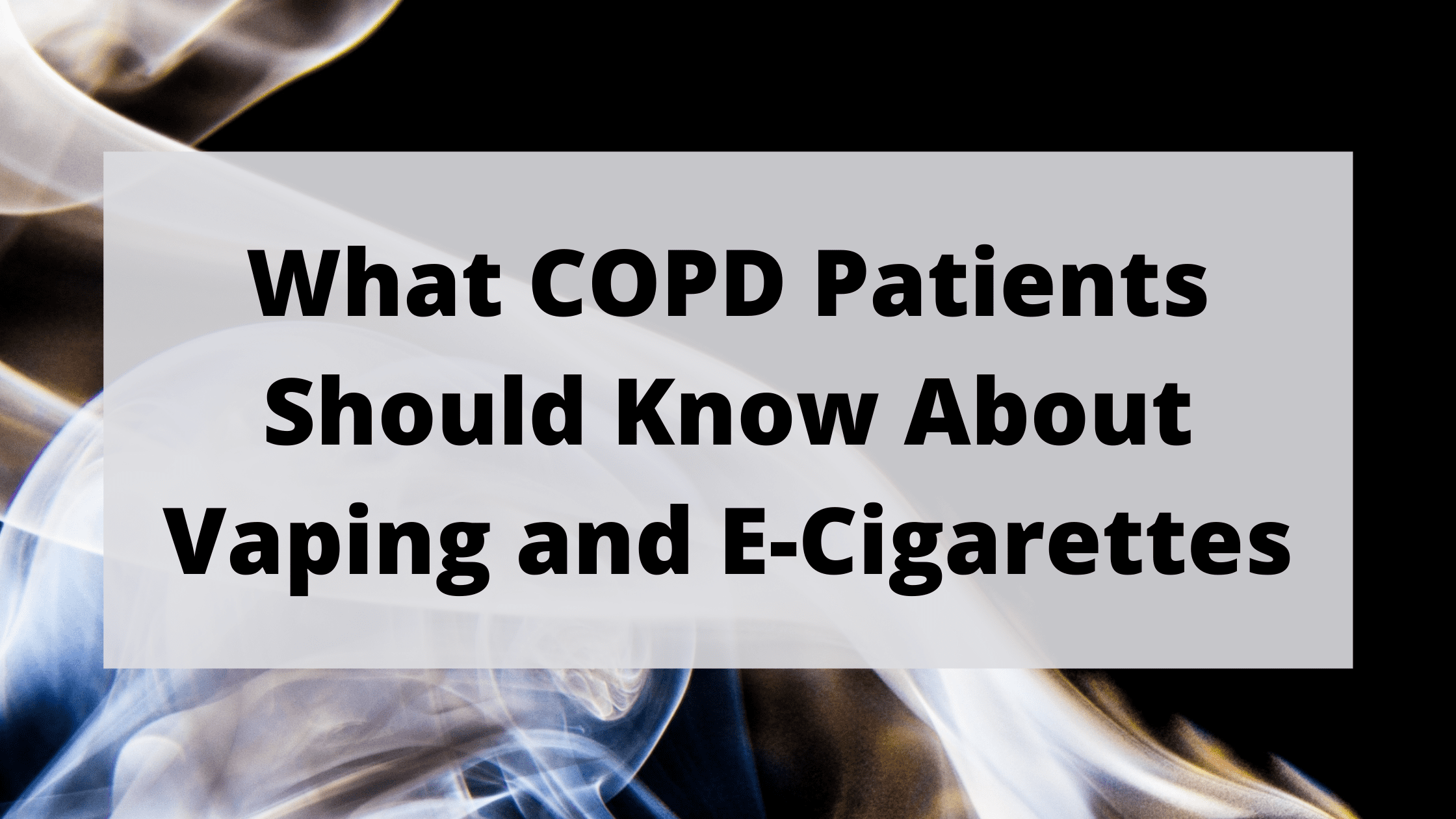
If you want to lead a healthier life, you need to be more acutely aware of how your lifestyle choices — and the lifestyle choices of others — affect your long-term well-being. For example, you need to research nutrition in order to make sure that your diet is helping you progress towards your health goals, rather than pushing you farther away from them. But nobody ever said this would be easy. With all the information (and misinformation) that’s out there, it can be pretty overwhelming trying to create a health plan and carry it out.
One thing that can really muddle up this issue and make it even more challenging is being diagnosed with a respiratory ailment like chronic obstructive pulmonary disease (COPD). While it may seem like this will only have an effect on your lungs, your respiratory health actually has a significant impact on your systemic health. For example, in one of our more recent posts, we took a look at how COPD can cause heart problems and swelling in the hands and feet.
{{cta('fa8abc2a-1e88-4fa3-82fd-1cb5b9ed43b2','justifycenter')}}
A topic that’s hotly debated these days is how vaping and e-cigarettes should be viewed as a COPD patient. Some people believe that vaping is an effective tool to help smokers wean off their bad habit to something that’s “less dangerous” and “less addictive.” However, on the other side, people believe it’s being used to get younger generations involved in smoking and other drugs. No matter where you stand on vaping, this post aims to clarify misconceptions about vaping and e-cigarettes. We’ll also show you why it’s a good idea to reconsider vaping as a COPD patient or someone who’s at risk of contracting COPD.
What are Vape Pens and E-Cigarettes?
The concept of “vaping” has not been around very long. In fact, the first commercially successful e-cigarette was created in 2003, but it wasn’t introduced to the United States until 2006. And despite the fact that the vaping industry was valued at around $14.05 billion in 2018 and is expected to grow to $29.39 billion in 2022, there still seems to be a lot of confusion about what vaping actually is.
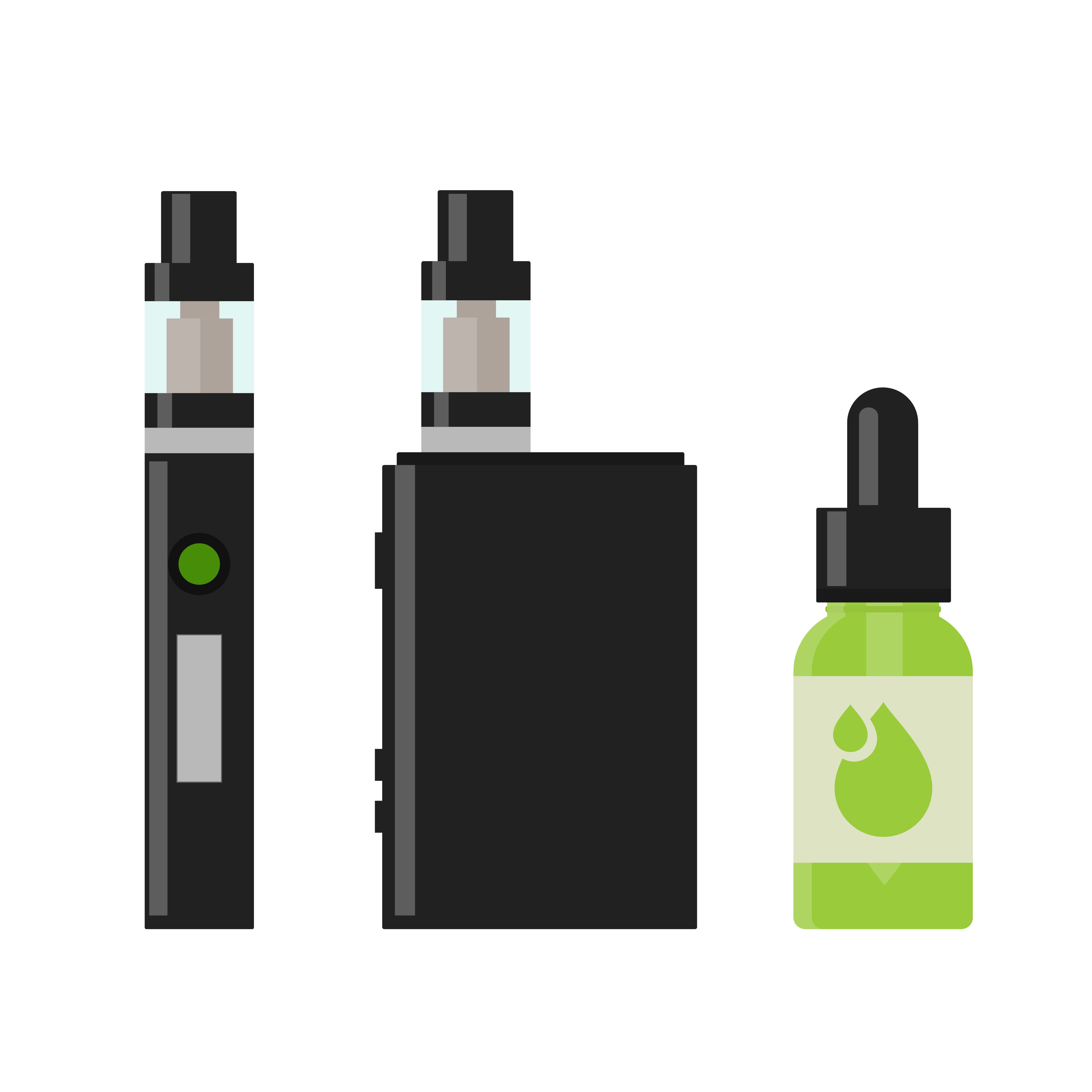
Like most products, e-cigarettes have evolved a lot since they were first introduced; but the basic principles remain the same: a battery-powered heating device is activated when the user inhales. This, in turn, vaporizes the e-liquid which is inhaled as an aerosol which is a suspension of fine solid particles and liquid droplets. The smoke that comes from a cigarette is also considered an “aerosol” because it contains water droplets, but vaping advocates claim that cigarettes are far more dangerous because they release more HPHCs due to their high combustion temperature.
Technically speaking, e-cigarettes and vape pens are essentially the same thing. The main difference is that e-cigarettes are designed to look like real cigarettes and once you use them up, they are disposed of. On the contrary, vape pens are much more popular and they can be recharged and refilled rather than being disposed of. We’re going to take a look at some of the risks associated with vaping, as well as some of the perceived benefits so that COPD patients can make more educated decisions about their lung health.
What are the Risks Associated with Vaping?
Chemicals Found in “Vape Juice”
Just like cigarettes, vape juice contains a whole host of chemicals that will harm your long-term health. We know that cigarettes have around 7,000 different toxic chemicals but when it comes to e-cigarettes, the facts are less clear. Since vape juice is being produced by thousands of companies across the country, it’s difficult to track everything that’s being put into them. According to the American Lung Association, however, these are some of the most dangerous components:
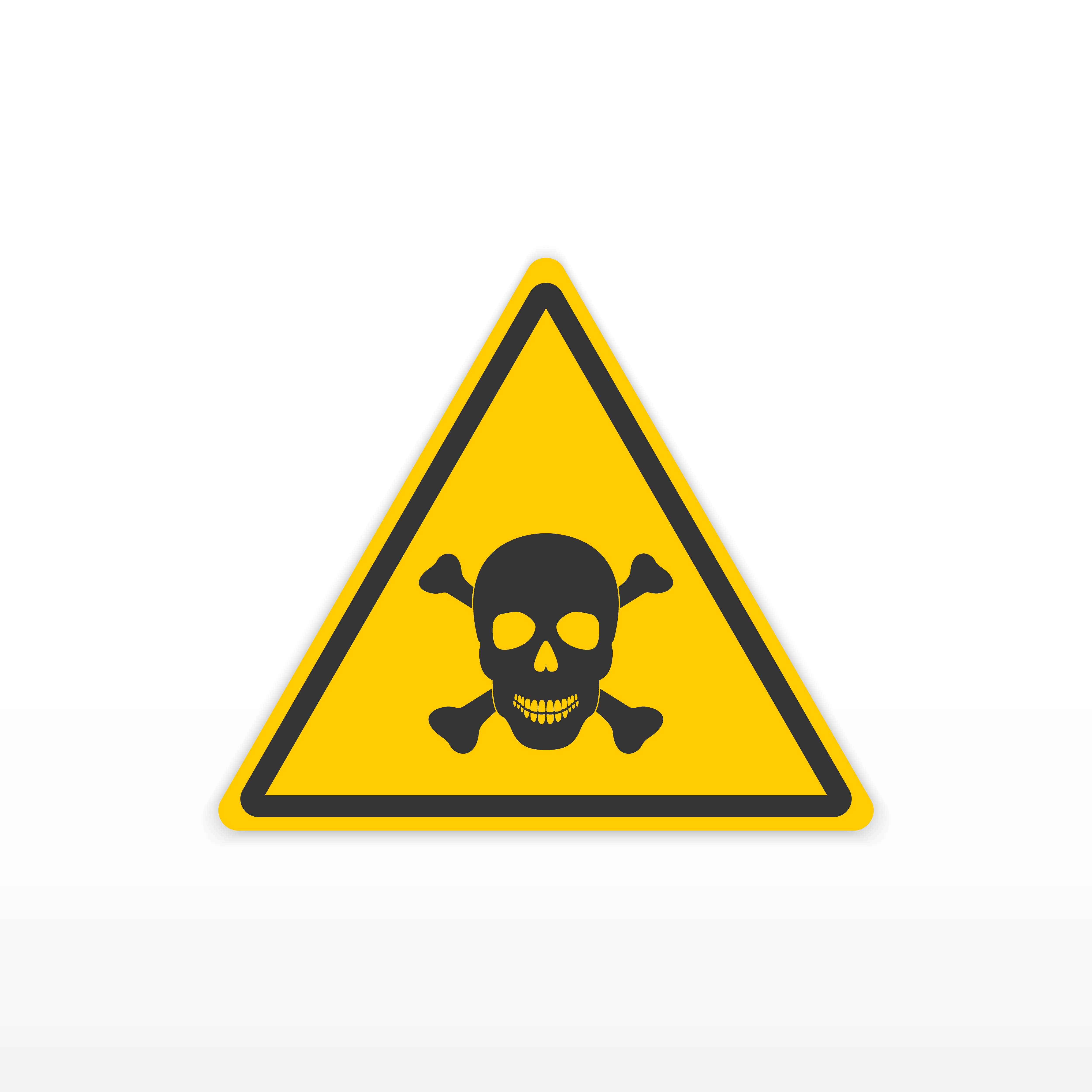
- Nicotine
- Carcinogens - including formaldehyde and acetaldehyde
- Volatile organic compounds (VOCs) like Benzene
- Diethylene glycol
- Diacetyl - known to cause bronchiolitis obliterans (popcorn lung)
- Acrolein - commonly used as a herbicide
- Propylene glycol - used to make paint solvent and antifreeze
An Argument From Ignorance
There’s a common logical fallacy that vaping companies often use to prove the safety of their products. This fallacy is called “an argument from ignorance.” Basically what this comes down to is using a lack of evidence in order to prove that something is true. Most people realize that this is not a valid way to argue a point, but it’s easy to get past someone if they aren’t actively looking out for it.

Vaping companies will claim that their products are safer than cigarettes because there is no evidence that they cause COPD or lung cancer. The problem with this argument, however, is that vaping has not been researched long enough for us to know exactly how it contributes to chronic lung conditions. COPD, in particular, takes several decades to develop and severe symptoms don’t usually manifest until later in life.
Another thing that needs to be researched is the effects of vaping on systemic health. We know that cigarette smoking damages your heart and blood vessels, and it’s a risk factor for many chronic systemic diseases, but vaping hasn’t been researched enough to determine if there is a link. Vaping advocates will claim that, since there are no immediate systemic effects, you have nothing to worry about. Be sure to look out for these logical fallacies next time you’re offered an e-cigarette.

It’s hard not to draw connections between what is going on now with vaping and what happened in the 1930s to 1950s with cigarettes. During those times, cigarettes were often advertised as “physician approved” just because they irritated the throat less than other cigarettes. These claims were based on nothing more than a couple of surveys and they were designed to profit off the general public’s lack of understanding concerning the dangers of cigarette smoking.
Vaping is Addictive
No matter how you slice it, nicotine is an addictive chemical regardless of how it’s consumed. Cigarettes, cigars, chewing tobacco, and e-cigarettes all contain high amounts of nicotine. This chemical is referred to as a “neurotoxin” because it alters the structure and function of the nervous system. Nicotine activates nicotinic receptors in the brain which are intended for the neurotransmitter acetylcholine, responsible for cognitive processing, memory, and attention.

There are nicotinic receptors in every part of the brain, so this is why nicotine has such a wide array of effects. And because the vapor is inhaled to the lungs, the effects are nearly instantaneous. One of the most well-known and concerning parts of the brain that nicotine affects is the nucleus accumbens which is often referred to as the “addiction hub” of the brain. Once nicotine enters this area of the brain, it releases dopamine, the neurochemical that’s responsible for feelings of reward.
E-Cigarette or Vaping Product Use-Associated Lung Injury (EVALI)
In 2019, we saw our first major outbreak of lung illness due to vaping. This new lung condition was dubbed “E-cigarette or Vaping Product Use-Associated Lung Injury (EVALI) by the CDC, and it’s currently being heavily researched. EVALI caused sudden and severe respiratory symptoms in otherwise healthy people, but researchers have determined that the one thing these cases had in common was the use of vaping products containing tetrahydrocannabinol (THC).

Another problem safety concern associated with e-cigarettes is the battery. While traditional cigarettes can cause fires, e-cigarette batteries have caused harm to the user by exploding or causing severe burns. According to VapeDanger.com, the batteries that are used in e-cigs are not tested well enough to ensure their safety and they’re typically designed for things like power tools rather than e-cigarettes.
Vaping as a “Gateway” Drug
One of the downsides that’s often under-discussed when it comes to vaping is its potential to be used as a “gateway drug.” A gateway drug is a drug that may not be extremely harmful in and of itself, but it can lead to someone trying other drugs that are far more dangerous. For example, even though vape juice contains less nicotine than cigarettes, it could make it either for someone to get hooked on traditional cigarettes.
Are There Any Benefits of Vaping?
While there are some perceived benefits to vaping like reducing addiction to cigarettes or saving money, you’ll be much better off if you completely eliminate nicotine use in your life. Since we don’t know the long-term effects of vaping, you’re basically just flipping a coin when it comes to your health. It’s best to assume that the only things you should be inhaling into your lungs are fresh air or any medication that your doctor has prescribed you for COPD treatment such as corticosteroids, bronchodilators, or other medication administered through an inhaler or nebulizer. Even then, these drugs should only be used as prescribed by your doctor.
How Should COPD Patients React to Vaping?
Find other Methods to Quit Smoking
Possibly the most common use for e-cigarettes is as a tool for smoking cessation. Proponents of vaping will say that vaping can act like a nicotine patch or other types of nicotine replacement therapy in order to wean people off of cigarettes. Unfortunately, studies have shown that using e-cigarettes in this way is no more or less effective than other smoking cessation tools. What’s more, there’s a chance that you could become addicted to both cigarettes and e-cigarettes. According to the Truth Initiative, 54.6% of e-cigarette users in 2016 also smoked cigarettes. This would suggest that many people are using vaping as a supplement rather than a replacement for traditional smoking.

The Centers for Disease Control and Prevention (CDC) maintains that the most effective cessation tools include counseling, medications, or some combination of the two. There are several different types of cognitive-behavioral therapy (CBT) that can be used to quit smoking, but the most popular include one-on-one counseling and group therapy. FDA-approved smoking cessation medication includes Chantix (varenicline tartrate) and Zyban (buproprion hydrochloride). Before taking these medications, however, you should speak with your doctor to determine if they’re right for you.
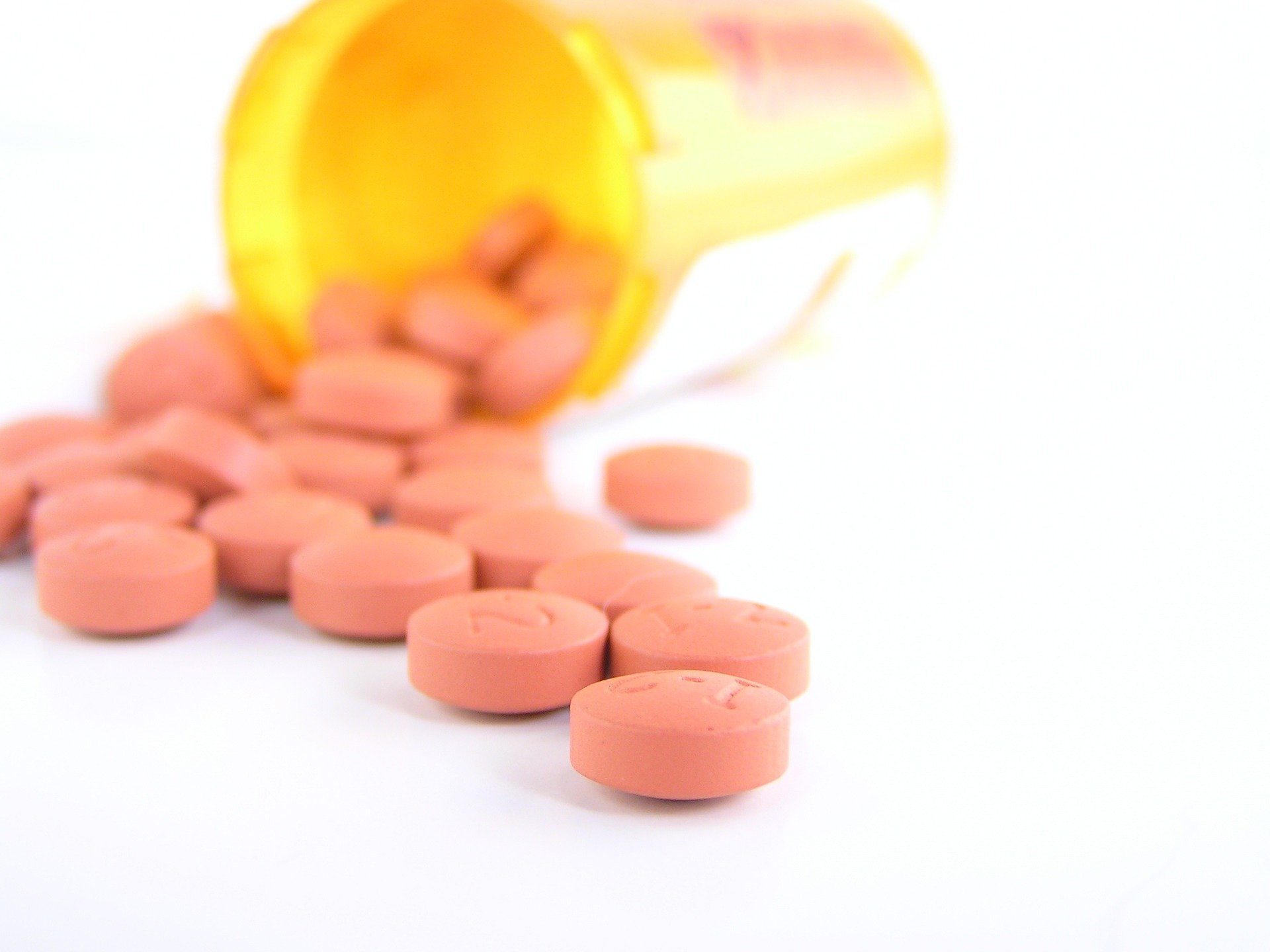
Above all, it’s important to try these other methods of smoking cessation before resorting to vaping. While e-cigarettes may be the most accessible option for many people, they are not proven to be effective at helping you kick the habit, and more importantly, we don’t yet know the long-term effects of vaping on the body. If you have COPD or you’re currently at risk of COPD, you should invest time in behavioral therapy, nicotine replacement therapy, or one of the FDA-approved medications before resorting to vaping.
Focus on your COPD Treatment Plan
If you have COPD, you should be focusing on your treatment plan above all else. This includes things like smoking cessation, supplemental oxygen therapy, a refined diet, and pulmonary rehabilitation. If you’ve smoked for years or decades, you may find it tempting to invest in vaping because it’s often advertised as a “healthier alternative” to smoking. But in reality, vaping will put you at a higher risk of contracting pneumonia, one of the primary causes of COPD exacerbations.
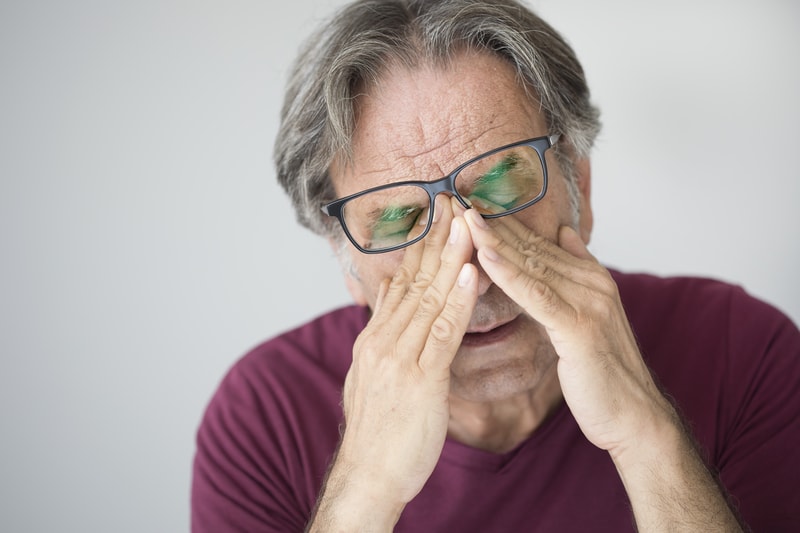
If you spend your time and energy focusing on making positive lifestyle changes, you’re likely to see your nicotine dependency dissipate over time. According to Addictions and Recovery, nicotine stays in the body for about 72 hours and nicotine withdrawal is worst 2 to 3 days after quitting. However, it takes around 3 months for your brain chemistry to return back to normal after smoking. Try to focus on your COPD treatment for this duration of time and you’ll find that it becomes much easier to avoid nicotine products.
Get Outside and Exercise
If you’re still struggling with nicotine withdrawal, consider exercising more frequently. According to Medical News Today, exercise is one of the best-known ways to combat nicotine cravings, and the best part is that it doesn’t require you to commit to a high-intensity exercise routine. Even 10 minutes each day of moderate exercise can significantly reduce the chance that you’ll fall back on your smoking cessation plan.
.jpg)
Understand the Financial Burden of Vaping
One of the claims you’ll hear thrown around is that vaping is “95 percent healthier and 40 percent cheaper than smoking.” While this is certainly an interesting statement, it’s not based in reality. First and foremost, very little research has been done on vaping especially when it comes to the long-term effects on the lungs. So, it’s very difficult to prove or disprove that vaping is “95 percent safer.”
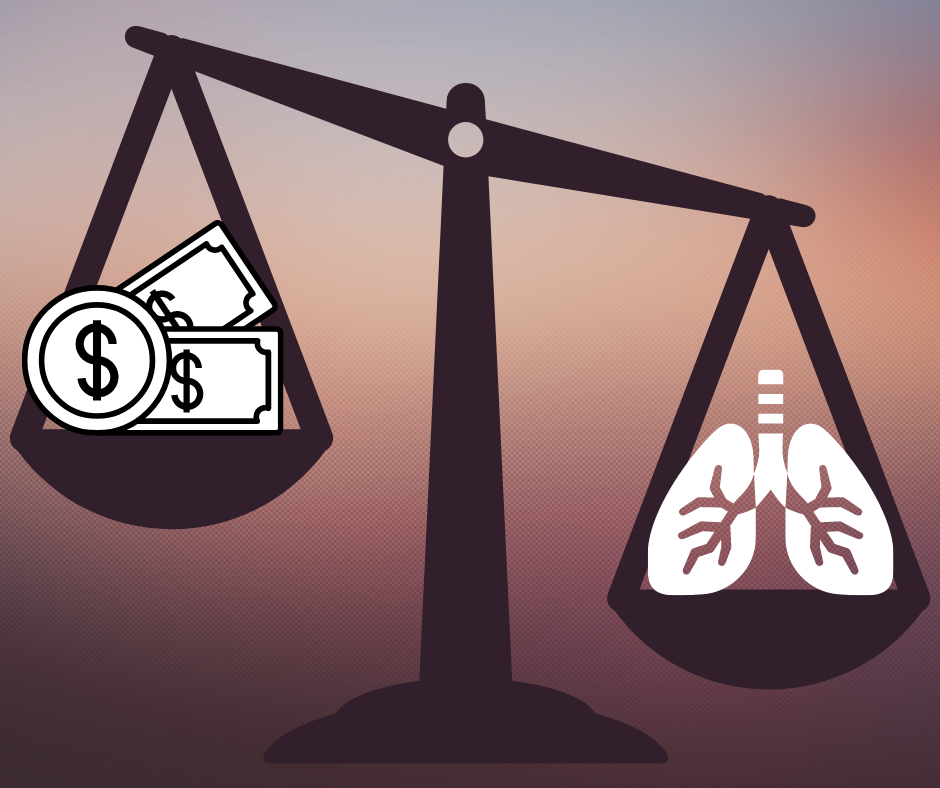
Secondly, the cost of smoking or vaping varies greatly. Some people smoke several packs of cigarettes a day while others smoke only once or twice a week. When they say that vaping is “40 percent cheaper,” they are usually comparing the lower estimates of vaping with the upper estimates of smoking. Be careful when you hear claims like this, especially if they’re coming from vaping companies.
Conclusion
Vaping is a trend that’s been increasing in popularity for years. Although it’s mainly used by young adults, many older adults and seniors are embracing it as a “healthier alternative” or “cessation tool” for traditional cigarettes. If you suffer from COPD or another chronic respiratory disease, you should be wary of these claims and focus on healthy lifestyle choices that are backed by many decades of research rather than several years of research.
Here at LPT Medical, we only sell products that are medically proven to help patients with COPD. Most people with COPD will be prescribed supplemental oxygen and we are happy to provide lightweight and durable portable oxygen concentrators that can keep you moving despite your respiratory condition. Whether you’re looking for the Caire FreeStyle Comfort, Inogen One G5, Respironics SImplyGo, or any other affordable portable oxygen device, we are here to help.
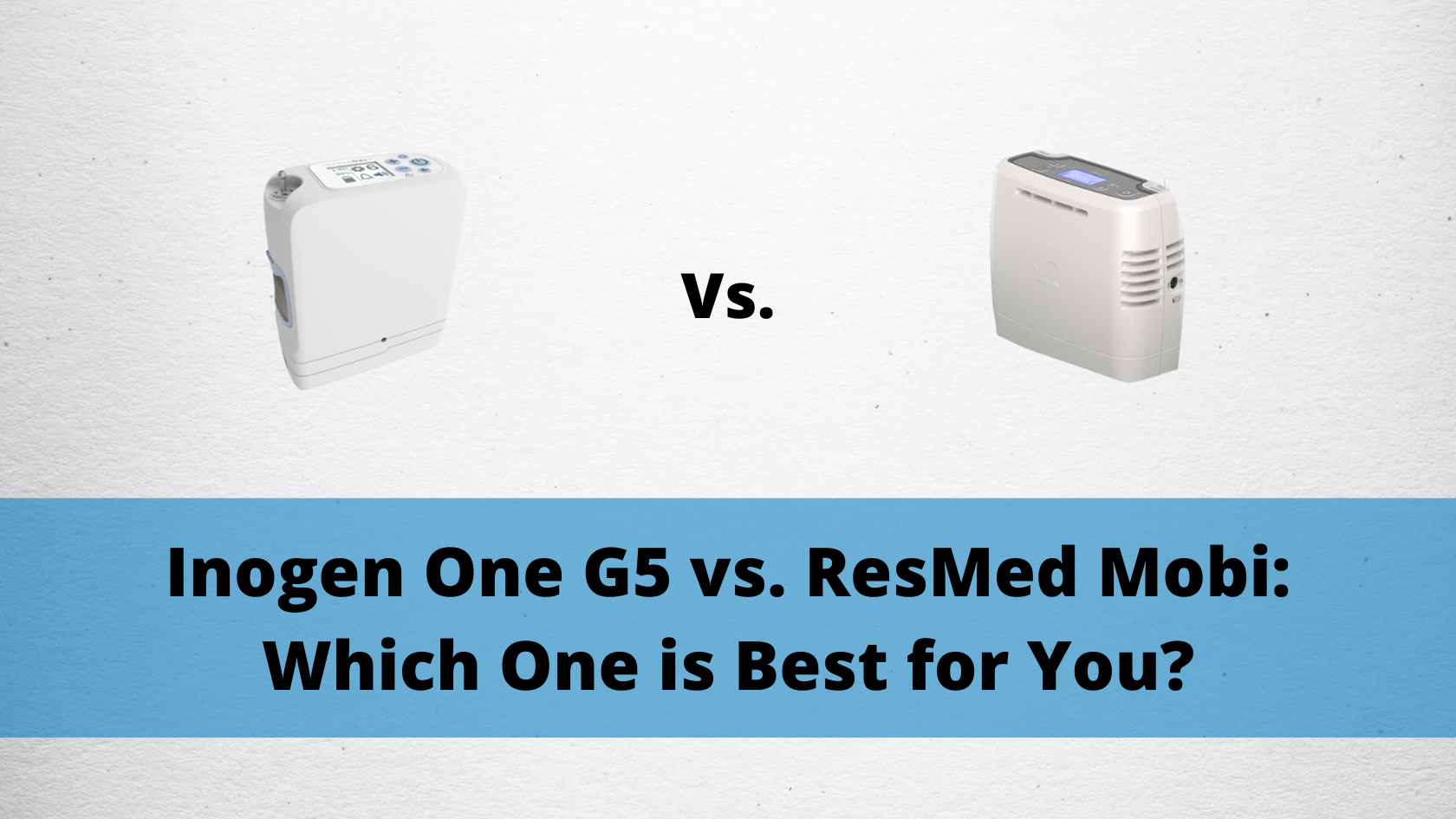
With all the new portable oxygen concentrators releasing each year, it can be really difficult to keep up with everything that’s going on. Doing a web search may help you out a bit, but it will likely raise more questions than it will answer. This is why we’ve taken the time to put together guides like this one to help you learn about the best portable concentrators of the new year.
However, as we’ve mentioned in the past, just because a concentrator is widely considered to be the best on the market doesn’t necessarily mean it’s the best one for you. Every oxygen patient has different wants, needs, and concerns, so it’s important to take all of these things into consideration first. Once you do so, you’ll be able to weigh the pros and cons of each unit before making a decision.
To further this goal, we’re taking a look at two popular pulse flow portable oxygen concentrators this week: the Inogen One G5 and the ResMed Mobi. Each of these concentrators has been praised by patients and retailers alike for their high-quality design and their focus on portability and freedom above all else. Read on to learn more about each unit and feel free to leave a comment if you have any questions.
ResMed Mobi Overview
ResMed is known for its innovations in CPAP technology. Since its inception in 1989, the company has focused on making sleep apnea treatment more effective, comfortable, and accessible. ResMed is also largely responsible for making CPAP devices more widely available for a global audience, allowing sleep apnea patients to get the products they need to sleep restfully.
So far, ResMed has only produced two oxygen concentrators: the ResMed Mobi and the LifeChoice Activox 4L. The older of which, the Activox 4L, marked ResMed’s first foray into oxygen therapy when it acquired the creators of the machine, Inova Labs, back in 2016. In early 2019, ResMed released the Mobi which saw several major improvements over the LifeChoice Activox 4L.
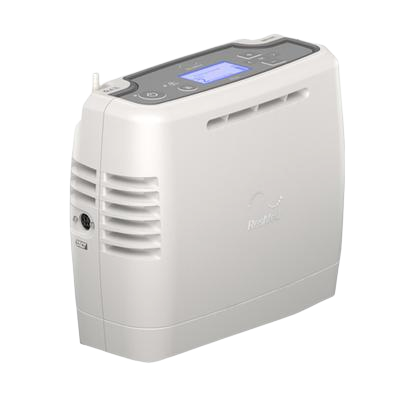
Like the name “Mobi” suggests, this oxygen concentrator is all about mobility. This device offers a lightweight design, ample battery life, and plenty of carrying options to suit your wants and needs. The ResMed Mobi has an internal battery, so unlike other portable oxygen concentrators, you won’t have to take time to replace batteries unless you want to use the Mobi’s external battery system.
Inogen One G5 Overview
Inogen was created in the early 2000s with the dream of revolutionizing the way COPD patients see oxygen therapy. At the time, oxygen patients dreaded using oxygen tanks because it meant being bound to their homes and expending a significant amount of their savings refilling their tanks once or twice a day. What’s more, these tanks could be dangerous and many people felt insecure even being around them.
.png)
The Inogen G5 is the latest pulse flow POC in Inogen’s “G” series of units. It boasts the highest oxygen output of any pulse flow portable oxygen concentrator on the market, coupled with a lightweight design and an incredible battery life. We labeled the Inogen One G5 the best portable oxygen concentrator of 2020 because we believe it’s the best machine for the greatest number of people.
{{cta('fa8abc2a-1e88-4fa3-82fd-1cb5b9ed43b2','justifycenter')}}
Pulse Flow Settings
As aforementioned, the Inogen G5 and ResMed Mobi are both pulse flow portable oxygen concentrators. What this means is that they both use pulse flow technology. This technology was developed as a more efficient alternative to continuous flow which is the oxygen delivery method used on heavier and more cumbersome oxygen concentrators.
As opposed to continuous flow which puts out a constant stream of oxygen, pulse flow delivers a bolus of oxygen only when the patient inhales. In concentrators like the G5 and Mobi, this plays an important role in keeping the units small, lightweight, and allowing the battery to last as long as they do.
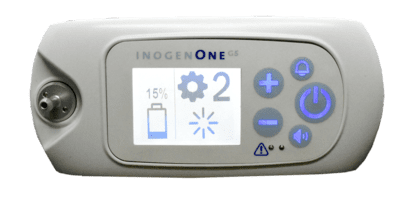
Oftentimes, this is the best place to start when choosing an oxygen concentrator, because if your machine doesn’t meet your oxygen demands, it’s not worth pursuing in the first place. You’ll be happy to know that both the Inogen One G5 and ResMed Mobi offer plenty of options. The G5 can go up to a setting of 6 and the Mobi can go up to a setting of 4.
The vast majority of oxygen patients only need a setting of 2, so both of these units tend to be a great choice. However, if your doctor recommends you use a higher flow setting or you want room to move up, the Inogen One G5 could end up being a safer choice for you.
Battery Duration
In the world of portable oxygen concentrators, battery life equals freedom. Fortunately, the Inogen One G5 and ResMed Mobi are both contenders for the best battery life of any portable oxygen concentrator on the market. However, their batteries work a little bit differently, so it’s important to understand these differences before you make a purchase.
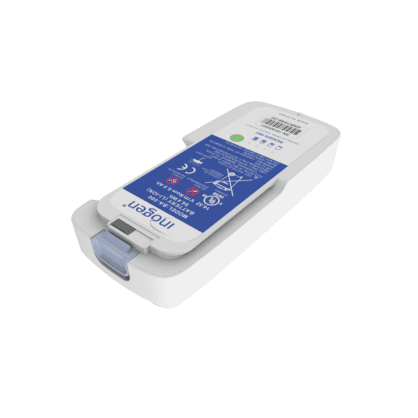
The G5 runs solely on external batteries that can be attached or removed from the device. The G5 single battery (8-cell battery) which comes with the device offers up to 6.5 hours of life on a pulse flow setting of 1. The G5 double battery (16-cell battery) which is sold separately, offers up to 13 hours of battery life on a setting of 1.
Instead of coming with an external battery like the G5, the ResMed Mobi has a battery built into it. This internal battery offers 8.6 hours of battery life on a pulse flow setting of 1. However, there is an external battery you can purchase separately which extends this to 13.1 hours of battery life on one charge.
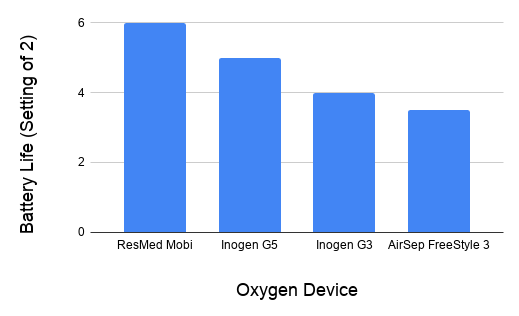
Weight
Weight is the third most important factor to consider when choosing a portable oxygen concentrator. After all, it wouldn’t be portable if it wasn’t light enough to carry around with you wherever you go. There are several important things to note when comparing the weight of the G5 and the weight of the ResMed Mobi.
The G5 weighs in at 4.7 pounds and the Mobi weighs in at 4.8 pounds. For the most part, the weight difference is negligible, however, you have to remember that the Mobi has more built-in battery life than the G5 offers with a single battery. If you want more than 6.5 hours of battery life with your G5, you’ll need to purchase an extra single or double battery which will add some extra weight.
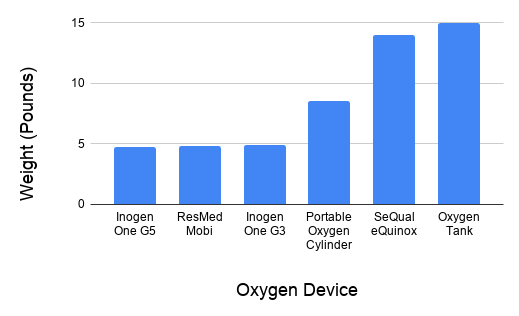
All things considered, the Inogen One G5 and ResMed Mobi excel when it comes to weight. If you suffer from back pain or other conditions that prevent you from carrying heavy objects, you’ll find that these two units are some of the best on the market. Most patients can easily carry these machines over their shoulder without having to use a rolling cart.
Sound Level
Sound level isn’t usually a problem with portable oxygen concentrators. If you’ve never heard one before, most people compare it to a quiet hum, not much louder than a whisper. Some patients notice the sound at first, but after a day or two of using the oxygen device, they get used to it.
It is worth noting the noise level of both units, however, because the Mobi is on the louder side compared to other pulse flow portable oxygen concentrators. The Inogen One G5 is just 37 decibels (dBA) on a setting of 2 and the Mobi is 44 dBA on a setting of 2. In most situations, you probably won’t notice this difference, but if you’re in a quiet place like a library, you may find that the Mobi is too loud.
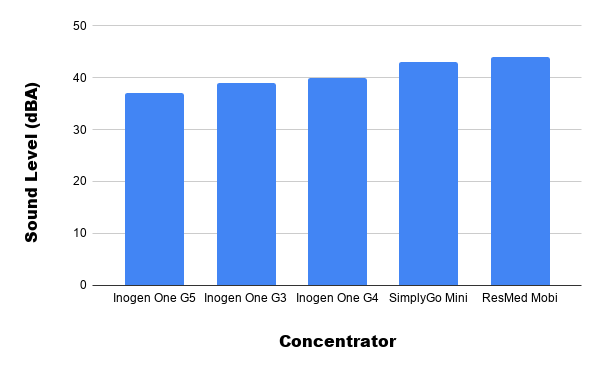
Usability
Ease-of-use and usability are important factors to consider when buying a portable oxygen concentrator. If you struggle to use your machine correctly while you’re out of the house, you could waste a lot of time that you could be spending enjoying your life. You should strive to find a POC that suits your lifestyle and doesn’t produce any unnecessary hassle for you in your daily life.

Both the Mobi and the G5 have user-friendly interfaces that enable you to easily modify your oxygen flow or check your battery life on-the-go. The control panel is built into the top of the unit and there aren’t a whole lot of buttons that you’ll need to deal with. Most oxygen patients are happy to find that they can learn all the ins and outs of operating their unit within the first day or two of owning it.
Accessories
You’d be remiss to purchase a Mobi or G5 without looking into all the great accessories they have to offer. One of the things you’ll be happy to find is that both units offer plenty of carrying options in order to customize your experience and allow you to live life on your own terms.

The Mobi has a sleek, gray carrying case that can be slung over your arm, worn on your back, or even attached to a suitcase or rolling cart using four different straps that you can purchase separately. The G5, on the other hand, has two different carrying options: the G5 Custom Carrying Case and the G5 backpack. The custom carrying case is for those looking to travel light and the backpack is great if you’re going on a long vacation and need to carry a lot of personal belongings.
The Ideal Candidate for the ResMed Mobi

The Mobi is ResMed’s first foray into medical oxygen devices after acquiring Inova Labs in 2016. While they are new to the oxygen industry, they have three decades of experience with producing sleep therapy equipment and they are largely responsible for the success of CPAP and BiPAP therapy today. Coupled with their prominence and reputability, ResMed has what it takes to put out great portable oxygen concentrators.
ResMed certainly didn’t disappoint with the ResMed Mobi. This portable oxygen concentrator is lightweight, has a small form factor, and has an outstanding internal battery that will keep you going all day. The ideal candidate for the Mobi is someone who wants more freedom in their day-to-day life. This means not having to worry about refilling an oxygen tank, having a long-lasting durable battery, and a reliable machine that can run 24/7 while you’re asleep or while you’re awake.
The Ideal Candidate for the Inogen One G5

It’s hard to compete with Inogen when it comes to their track record of success. While they haven’t been around as long as other oxygen concentrator companies, the impact they’ve had is undeniable. In fact, Inogen is such a sought-after brand that patients and retailers alike eagerly await the release of their concentrators and accessories.
Having been released this past summer, the Inogen One G5 is a top-tier portable oxygen concentrator. In terms of weight and battery life, the G5 is neck-in-neck with the ResMed Mobi. Most importantly though, the G5 offers two more flow settings than the Mobi, so if you have higher oxygen demands, the G5 will always be a better choice.
Conclusion
At the end of the day, you can’t really go wrong with the Inogen G5 or ResMed Mobi. Both units are backed by reputable and experienced brands and they’re some of the most advanced oxygen therapy devices the industry has to offer. Once you ensure that your oxygen needs are accounted for, it ultimately comes down to preference. If you’ve used ResMed sleep apnea products before, go with the Mobi. However, if you’ve used other Inogen products like the G3 or G4, the G5 may be your first choice.
Living healthily and happily with COPD is all about developing healthy lifestyle habits and learning how to keep your symptoms under control. Because it is a chronic disease with no real cure, the only way to manage it is by keeping up with daily medication and carefully following treatment goals.
That's why all COPD patients should have a personalized COPD action plan to help them keep track of their medications and other treatment goals.
A COPD action plan is a comprehensive set of instruction on how to manage and treat your COPD. It's the most important tool you have for keeping your symptoms under control and preserving the health of your lungs and the rest of your body.
A typical action plan includes all the important parts of your COPD treatment, including your medication schedule, what to do when your symptoms act up, and your diet and exercise regimen. It also helps you remember what to do in an emergency and know when to see your doctor for a problem.
In this post, we're going to help you better understand what a COPD action plan is and how you can use it to better manage your disease. We'll show you what a good action plan looks like, how to make one with your doctor, and how to put your treatment plan into action.
Crafting your COPD Action Plan

Putting together your COPD action plan is an individualized process that you and your doctor will go through together. Every patient's action plan is unique and tailored to fit their personal needs.
A good COPD action plan will give you detailed treatment instructions and clear plan for what to do if your symptoms get worse. It should take your medical history, lifestyle, symptoms, and other life factors into account.
As you and your doctor work on your action plan, it's important to have a clear picture of both your current situation and your future goals. Here are some tips to help you and your doctor better understand your condition and get on the same page.
Track Your Symptoms

Helping you manage your COPD symptoms is the most important purpose of a good COPD action plan. But in order for it to be useful and accurate, you and your doctor need to have as much information as possible about all symptoms you experience and how they fluctuate over time.
The best way to get a better understanding of your symptoms is to record them daily with a journal or a symptom checklist. This will help you remember what symptoms you had and when you had them the next time you talk to your doctor, and to track patterns and changes over time.
You should try to make your notes as detailed as you can so that you and your doctor have as much information to work with as possible. Make sure you write down any and all ailments you experience, even ones that seem small or inconsequential.
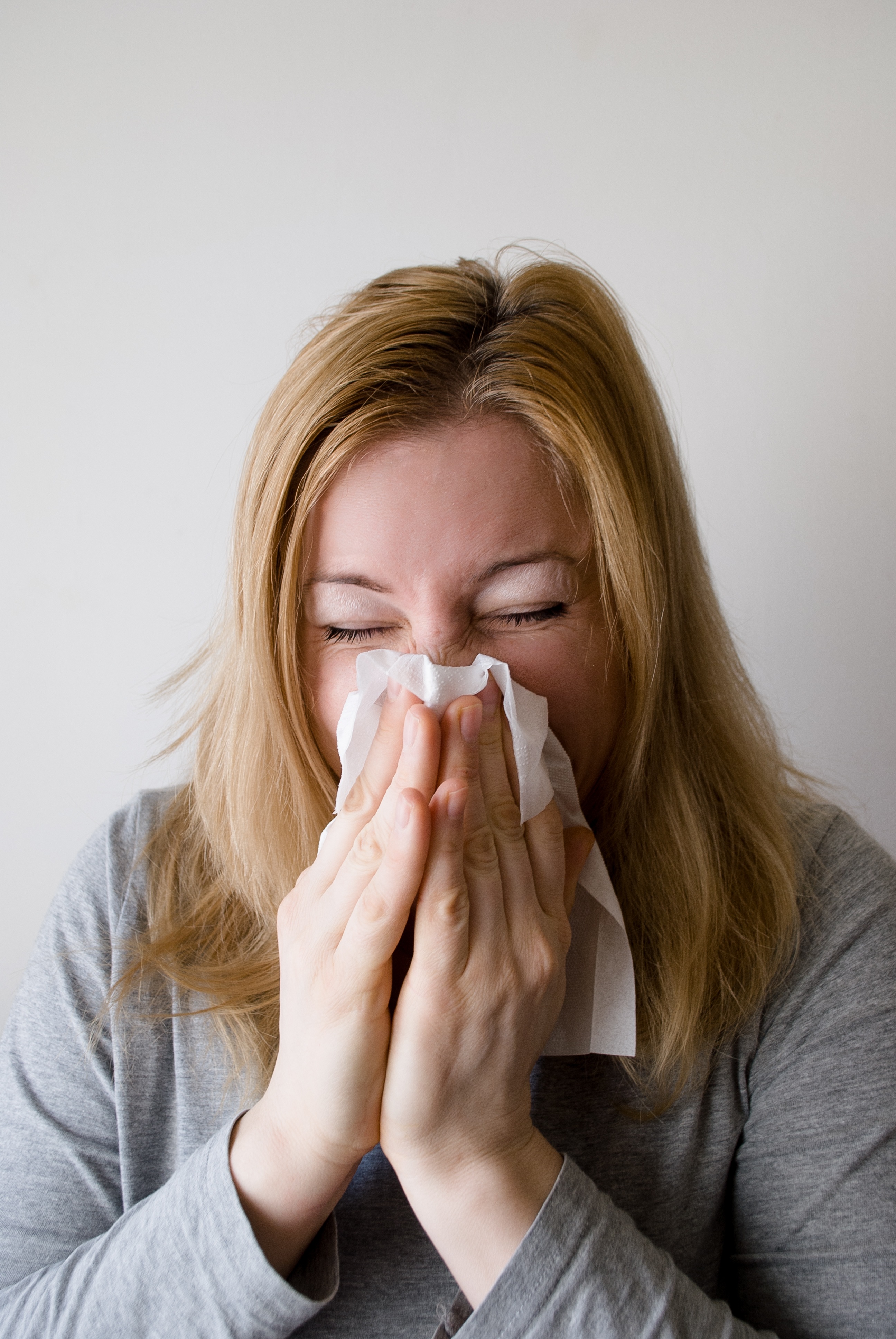
The more information you have on your condition and symptoms, the more useful your action plan will be. However, it's worth writing down your symptoms even after you have an action plan in place. It will not only make it easier to notice changes in your condition as the disease progresses, but will also help you adjust your action plan as your symptoms change.
Here are some tips for what you should include in your daily symptom diary:
- Write a list of any and all physical and psychological symptoms you experience every day, especially breathing and respiratory problems. (e.g. breathlessness, fatigue, muscle weakness, coughing, anxiety, depression, etc.)
- Record and notable changes or improvements in your symptoms compared to recent days.
- Record any changes in the frequency or severity of your cough, and note any changes in the color and consistency of any mucus you cough up.
- Keep a detailed record of any breathing issues and when they get better or worse throughout the day. Record what kinds of activities cause you to feel short of breath and your general ease of breathing from day to day.
- Keep track of how much sleep you get (in general) and any sleeping difficulties you have, such as insomnia or waking up frequently during the night.
-
Write down the general time and situation in which your symptoms occurred. (e.g. all day long, in the morning, after eating lunch, after exercising, after going to bed, etc.)
- Include any special circumstances surrounding your symptoms. (e.g. you were outside in the heat, your allergies were acting up, you forgot to take your daily medication, etc.)
- Keep track of your overall mood and mental state from day to day. (e.g. you felt tired, you felt motivated, you felt anxious, etc.)
- Record any prescription or over the counter medications you took that day and approximately what time you took them.
- Keep track of any exercise or physical activities you do.
- Record any smoking, tobacco, or other drug use (including alcohol).
As you start your COPD symptom diary, it may help to have a complete list of COPD symptoms on hand to help you know what to look out for. You can also use a COPD symptom checklist, like this one here, to help you remember what's important to keep track of.
Think About Your Goals

In general, it is the goal of every COPD patient to breathe easier and reduce other respiratory symptoms. However, these larger goals are difficult to reach without first breaking them down into smaller goals that are easier to act on.
For example, if you smoke cigarettes, one of your goals could be to reduce the amount of cigarettes you smoke or stop smoking altogether. You could break this goal down into even smaller steps, too, such as going to a smoking cessation counselor or joining a quit smoking program.
You should also think about your lifestyle and any areas that you need to improve. For example, you may need to lose weight, eat more fruits and vegetables, or get more exercise to keep your body strong and prevent COPD complications.
Other goals might relate directly to your symptoms and helping you breathe comfortably throughout the day. Things like always taking your medications as directed, pacing yourself during exercise, and utilizing therapeutic breathing techniques can help you reach those goals.
Once you know what you are striving for, you and your doctor can put together a treatment plan that addresses all of these goals. The following list will give you an idea of some of the major treatment goals that you should consider as you craft your COPD action plan.
General COPD Treatment Goals:
- Quitting smoking
- Improving your ability to breathe
- Getting more exercise to strengthen your body and lungs
- Eating a healthier, COPD-friendly diet
- Reducing coughing, wheezing, and other respiratory symptoms
- Reducing the number of COPD flare-ups and exacerbations you have
- Reducing your risk of COPD complications (e.g. heart attacks and osteoporosis)
- Slowing your disease from progressing further
- Working with your doctor and other medical specialists to track your symptoms and achieve your treatment goals
Consult With Your Doctor

Once you've had time to track your symptoms and brainstorm your treatment goals, it's time to sit down with your doctor to put together a comprehensive COPD action plan. Your doctor may have a standard template, like this one, to fill out, or he might put together a custom document for you to take home.
Make sure you bring your symptom diary and any other information about your medical history that your doctor may need. Your doctor will also use lung function tests, including spirometry, to determine your treatment and medication needs.
It's important for your doctor to include you in his process and thoroughly explain every part of your action plan and how to use it. Take the time to look over your treatment plan carefully and don't be afraid to ask questions or ask for clarification.
While your COPD action plan helps your doctor coordinate your medications and treatment goals, your action plan's primary purpose is to be a resource for you. It is very important that you understand your plan in its entirety and how to use it to manage your disease on a daily basis.
Depending on your condition and situation, you may have a team of doctors and specialists working to help you stay healthy. In this case, you will need to coordinate your action plan with all of your caretakers to ensure your plan is as cohesive and comprehensive as possible.
{{cta('fa8abc2a-1e88-4fa3-82fd-1cb5b9ed43b2','justifycenter')}}
The Three Zones of Your COPD Action Plan
It's important to understand that your COPD action plan is actually split up into three distinct plans of action. From here on out, we will refer to these three plans as the green zone, yellow zone, and red zone action plans, as this is the typical way to organize them.
These three zones make up the core of your COPD action plan and tell you what to do in different situations. They tell you how manage your COPD when your symptoms are normal (green), worse (yellow), and severe (red), and how to know which zone's action plan to use.
This scheme is very useful for helping you recognize when you experience a flare-up or you need to call your doctor or seek emergency medical attention. It also helps you remember how to stay healthy and what to do when your symptoms get worse.
Think of each zone as representing a specific plan of action depending on how you feel on a particular day. It is composed of two main parts: your symptoms and the actions you should take.
{{cta('43b79c5e-6bd6-4f02-ac27-2d038d20c146','justifycenter')}}
The first part is a description of the symptoms and the duration of symptoms that correspond to that particular zone. This is meant to help you recognize when your symptoms fit the requirements for that zone's action plan, so you can always tell when to take the actions for that zone.
The second part is a list of actions you should take whenever you experience the symptoms that correspond to that zone. It may include things like what medication to use, how much exercise you should do, breathing techniques, mental health strategies, and other instructions for keeping yourself healthy.
For example, the green zone would include your normal, baseline symptoms and strategies for managing them on a regular basis. It would also include a list of actions to take on a regular day when your symptoms are at a typical level.
The Yellow zone should include a description of what it looks like when your symptoms flare up, and what to do to manage them and keep them from getting even worse. You would refer to the actions and strategies in this zone when you experience a minor flare up or exacerbation.
The red zone gives you instructions on what you should do when your symptoms get more severe. It will help you recognize at what point you should seek medical attention and what to do in an emergency.
The symptoms and actions that go in each zone will depend on your medical history, lung function, and your personal COPD symptoms. Since it is based on your baseline symptoms, which may be more or less severe, your green zone action plan may differ significantly from other patients, and will change as your disease progresses.
Here is an overview of the different action plan zones and when you should use them:
- Green Zone: “I am doing well today.” Use this plan when your symptoms are at a normal, baseline level, and you feel well enough to continue your usual exercise and activities.
- Yellow Zone: “I am not feeling well today or I am experience a COPD flare-up.” Use this plan when your symptoms are worse than normal, you are having difficulty breathing during your usual activities, or you notice a change in your mucus, your sleep quality, your appetite, or the frequency with which you have to use your quick-relief medications.
- Red Zone: “I need urgent medical care.” Use this plan if your symptoms become very severe, to the point that you feel shortness of breath at rest and are unable to do any physical activity. Breathing difficulties that severely interfere with sleep, fever or shaking chills, feeling confused, coughing up blood, or having chest pains are other signs that you need emergency medical care and need to follow your red zone plan.
To see an example of what an actual COPD action plan looks like, you can check out this sample plan from the American Lung Association.
Daily Treatment Goals and Instructions (Green Zone)
Your daily symptom management and treatment goals—the green zone—is one of the most important aspects of your COPD treatment plan. It contains all the medications and actions you should take on a typical-symptom day to stay healthy and keep your symptoms under control.
When your symptoms are at your usual baseline level, you should follow the actions in this plan. If you keep your COPD well-managed and minimize flare-ups, you should be able to use your green zone plan on most days.
It's a good idea to review this part of your plan regularly, even though you use it often, just to jog your memory and review your goals, medications, and treatments. It will help you stay motivated, keep on track, and remind you of any habits or treatment methods you may have gotten lazy about doing.
Your Plan for Managing Flare-ups and Exacerbations (Yellow Zone)
Generally, any noticeable increase in COPD symptoms should direct you to use your yellow zone action plan, including feeling low on energy, experiencing more difficulty breathing, worsened coughing, or changes in your sleep quality and appetite. You should also look for changes in the color and consistency of your mucus and how frequently you have to use your quick relief medications.
When your symptoms flare-up or your breathing problems get worse, your yellow zone plan will tell you exactly what you need to do to keep your symptoms under control. It should include your usual maintenance medication along with instructions on how to use your quick-relief medications effectively.
Your yellow zone action play will likely include other treatments for reducing your symptoms, such as breathing techniques and mucus clearance techniques, which we will discuss more in the following sections. It may also include stricter guidelines for using supplemental oxygen and protecting your lungs from inflammatory environments and irritants.
Your doctor may instruct you to start taking a course of antibiotics or corticosteroid medications when your symptoms get worse as part of your yellow zone action plan. You may also need to call your doctor if your symptoms don't get better within a day or two.
Your Plan For Emergencies (Red Zone)
The purpose of your red zone action plan is to remind you of what to do in an emergency. You should follow this plan when your symptoms become so severe that you have difficulty breathing at rest.
Extreme shortness of breath, severe fatigue that interferes with daily living, or being unable to do light physical activity is a sign that you need to seek immediate medical attention. Other signs include chest pain, coughing up blood, fever, chills, confusion, and symptoms that are so severe that you are unable to sleep at night.
If you experience any of these symptoms, follow your red zone action plan and call 911, or have someone else drive you to the emergency room as quickly as possible. You may also need to take a medication or adjust your oxygen prescription to help you cope until you get to the hospital.
The Components of a Good COPD Action Plan
A good COPD action plan contains everything you need to know about managing your disease on a daily basis and when your symptoms flare up. It should tell you what medications to take every day, what medications to take when your symptoms get worse, and all the actions and habits you need to do on a regular basis to keep your lungs healthy and your symptoms under control.
Many action plans also include information about your diet, exercise, and lifestyle goals related to your COPD. In these next sections, we'll explain all the different components that your COPD action plan may include as part of your green and/or yellow zone plans.
Your Medications
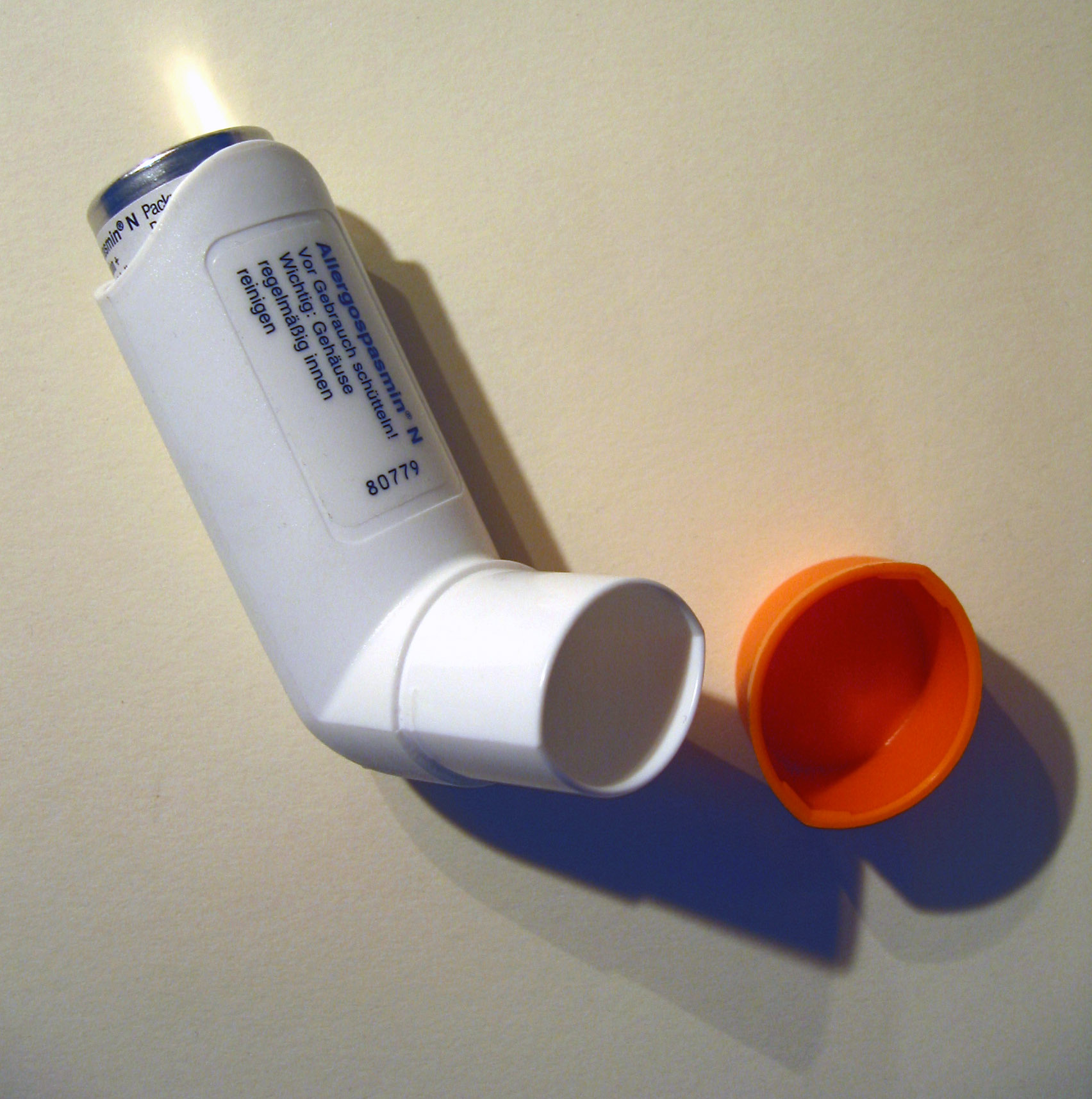
Your COPD action plan should include all of the prescription and over-the-counter medications that you need to treat your COPD. It should tell you what medication to take when your symptoms are at baseline, what medication to use as-needed (and when to use it), as well as the correct dosage and the frequency that you should take it.
Your maintenance medications help you breathe easier on a daily basis and are the cornerstone of daily COPD treatment. However, you have to take them every single day as directed by your doctor in order for them to be as effective as they can be.
On the other hand, not keeping up with your daily maintenance medications can make your symptoms worse and cause your COPD to progress faster. By keeping your symptoms minimized on a daily basis, your maintenance medicine is very important for staving off flare-ups, exacerbations, heart problems, and other serious COPD complications.
Your doctor may also prescribe quick-relief or rescue medications—in addition to your maintenance medicine—to use as part of your yellow zone action plan on days when you experience worsened COPD symptoms. These medications help reduce sudden, uncontrolled symptoms and help you breathe easier when your symptoms flare up.
Your doctor may also give you a course of steroid medication or antibiotics to use when you notice your symptoms getting out of hand. Most of the time, you will be instructed to take them if your symptoms stay worse for more than a day or two or when you notice the signs of an oncoming exacerbation.
Whenever you start a course of antibiotics, it's very important that you continue to take the entire course, even after you start to feel better. As long as you use them correctly and as directed by your doctor, antibiotics and steroid medications can help you avoid serious exacerbations and recover from flare-ups more quickly.
Your COPD action plan should also include information about any vaccines you need, including pneumonia and influenza vaccines. Most adults need another dose of the pneumonia vaccine after the age of 65, and all COPD patients should get their yearly flu shot to stave off exacerbations and infections.
Whatever medications your doctor recommends should be included in your action plan along with enough detail to help you use them reliably and consistently. If you have any questions about your medications or how to use them, talk to your doctor and ask him to clarify the instructions in your plan.
Breathing Exercises

Breathing exercises like pursed lips breathing and diaphragmatic breathing are a vital part of daily COPD management for patients who struggle with shortness of breath. These breathing techniques help you control your breaths and even strengthen the muscles in your chest that you use to breathe.
Practicing breathing techniques every day can help you keep your breathing steady and under control when you exercise and do other active, daily tasks. They can also help you manage minor symptom flare-ups and get through bouts of coughing more easily.
If you deal with breathlessness and coughing often, your doctor may recommend breathing exercises as part of your everyday COPD management plan. They may also be helpful to practice when your symptoms get worse as part of your yellow zone action plan, too.
Managing Airway Congestion
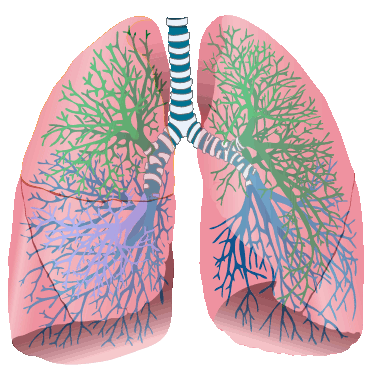
Excess mucus is a common symptom that many COPD patients have to manage. If you don't take care to stay hydrated and clear the mucus out of your lungs, it can make symptoms like coughing and breathlessness worse.
If you let mucus build up in your airways, it narrows the passages that air can flow through and makes it more difficult to breathe. Mucus buildup can also trap bacteria, viruses, and irritating particles that can inflame your airways or cause infections in your lungs.
Because of this, keeping your airways clear of mucus is often an important part of managing COPD. To address this, your treatment plan may include mucus clearance techniques to use when you get excess phlegm.
The goal of mucus clearance techniques is to dislodge stuck mucus from the walls of your airways and cough it up and out of your lungs. Often a two-pronged approach of proper hydration and huff coughing can help you keep congestion under control.
Staying hydrated thins out your mucus, while coughing moves the mucus up through your airways so you can cough it up through your mouth. Your doctor may also recommend a variety of other mucus clearance techniques and aids, such as chest percussion, positional drainage, or using a special high frequency chest wall oscillation vest, as part of your COPD action plan.
Quitting Smoking
If you are a smoker, then quitting should be your number one priority and included as part of your COPD action plan. Quitting smoking will help prevent further damage to your lungs, reduce flare-ups, and preserve the lung function that you still have left.
To help you quit, you may want to include a quit smoking program or therapy as part of your COPD management plan. If you are unable to quit, reducing the number of cigarettes you smoke or seeing a smoking cessation therapist can help put you on the right track to ending your addiction.
If you want help quitting smoking, check out this article, “Where to Get Help When You Decide to Quit Smoking,” from the National Cancer Institute. You can also get more information about smoking cessation and quit smoking resources from the CDC, the American Lung Association, smokefree.gov, and many other places online.
Other Healthy Lifestyle Goals
Everyone experiences bloating every now and then, often the result of a big meal or a minor stomach illness. However, bloating tends to be a frequent problem for people with COPD for different reasons, and it's a problem that is frequently underestimated.
{{cta('fa8abc2a-1e88-4fa3-82fd-1cb5b9ed43b2')}}
Bloating tends to be particularly uncomfortable for COPD patients because it can make it much more difficult to breathe. Common COPD symptoms like chest soreness and coughing can also feel much worse when your belly is bloated and tight.
What many patients don't realize is that their COPD bloating symptoms could be directly or indirectly caused by their disease. In some cases, treating underlying COPD symptoms can relieve and prevent bloating or at least make it much more tolerable.
In this article we're going to help you better understand the connection between COPD and abdominal bloating and what you can do about it. We'll explain how and why COPD bloating happens, how to reduce bloating, and how to better manage your symptoms and feel more comfortable when bloating unexpectedly strikes.
The Connection Between COPD and Abdominal Bloating

Bloating is a symptom that many people with COPD deal with on a regular basis, and it can make it more difficult to cope with the disease. However, despite how common bloating is among COPD patients, many doctors and patients don't realize that the two conditions could be related.
Sometimes bloating is a direct result of COPD symptoms or medications, and sometimes it's a result of COPD-related lifestyle changes and complications. For example, COPD often makes it difficult to stay active and eat a healthy diet, both of which increase your risk for bloating.
It also works in the opposite direction; being bloated can make COPD symptoms like breathlessness worse. Bloating causes swelling in your stomach and intestines, which causes them to push up on your lungs and diaphragm.
Many COPD patients also have enlarged lungs which require extra room to expand. This combined with the extra pressure that bloating puts on your lungs can make it especially difficult to breathe.
Having a bloated stomach can also make your breathlessness worse when you eat, especially if your lungs are enlarged. Many COPD patients struggle to breathe when they eat because their lungs have less room to expand when their stomach is full.
What is Bloating?

Bloating is usually described as a feeling of tightness, pressure, or stretching in the abdomen. It is often caused by gas trapped in your stomach or intestines, and it can even cause your stomach to visibly swell up.
Bloating is usually caused by problems with digestion, such as when food moves too slowly through your digestive system; this creates more opportunities for it to be fermented into gas. It can also be caused by food allergies, illnesses, and digestive disorders like irritable bowel syndrome.
However, bloating can be caused by many other things, including medications, stress, inactivity, and swallowing air. Just about anything that can have an effect on your digestive system has the potential to cause bloating.
{{cta('b59df0c1-c4de-47a8-8e1c-0d33d4b414aa','justifycenter')}}
The most common reason that otherwise healthy adults experience bloating is a poor diet. Eating too many fried and fatty foods, eating too much, and not eating a balanced diet can all lead to bloating.
Bloating can also refer to water bloating, which happens when your body retains extra water, causing your limbs and abdomen to swell slightly. This kind of bloating can be just as uncomfortable as bloating caused by gas and causes many of the same symptoms.
While bloating isn't a serious symptom on its own, chronic bloating could be a sign of a more serious underlying condition. For people with COPD, frequent bloating is a problem because it can make other COPD symptoms much more difficult to manage.
How COPD Causes Bloating
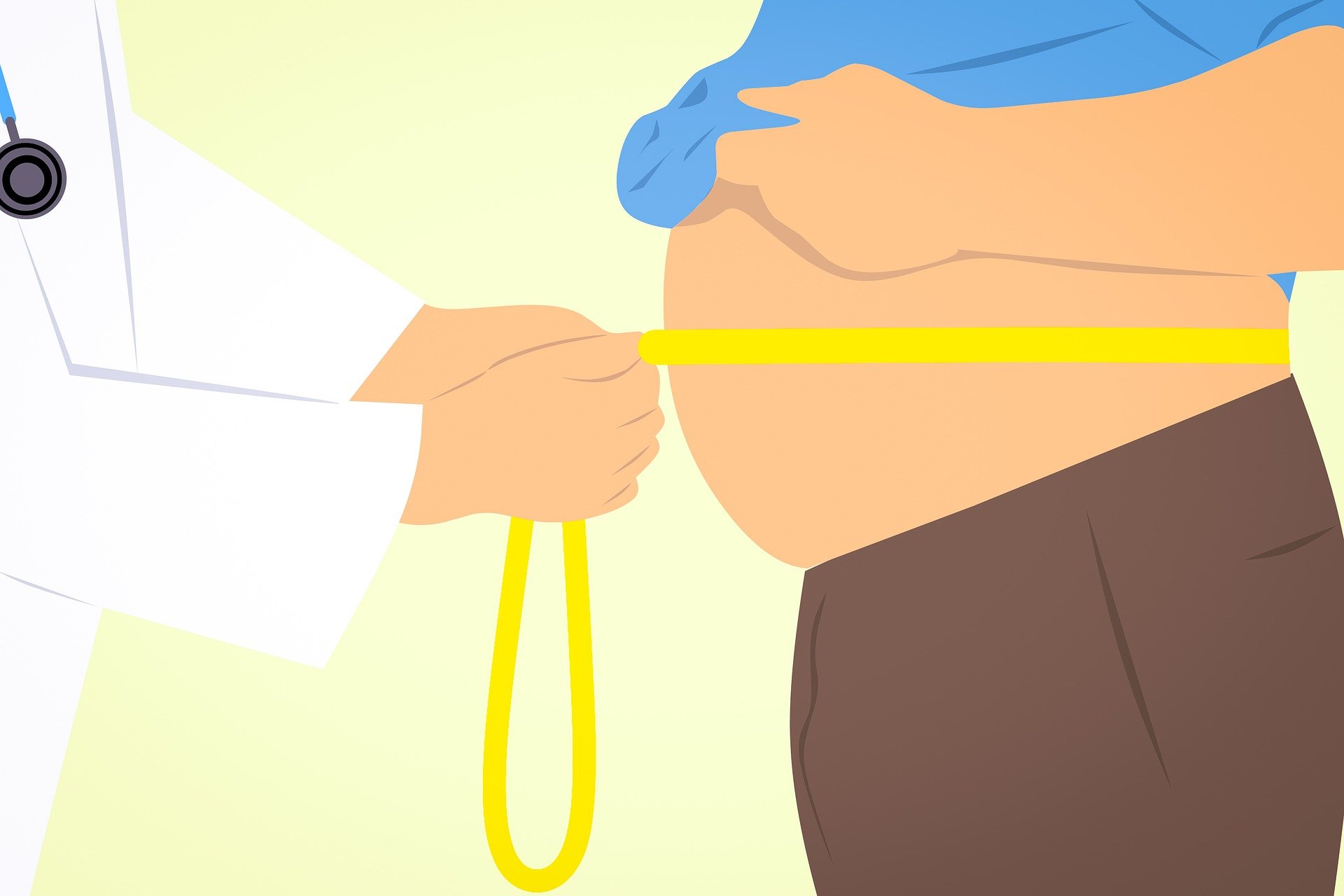
There are a number of reasons why COPD patients are more prone to getting bloated. In these next sections we'll take a closer look at some of the most common reasons that people with COPD suffer from bloating.
Shortness of Breath
COPD makes it difficult to breathe and causes frequent episodes of shortness of breath. When this happens, it can cause you to gasp, wheeze, or hyperventilate, which can sometimes lead to bloating.
When you struggle to breathe, you tend to take quicker and shorter breaths. This makes it easier to swallow extra air into your stomach along with the breaths you inhale.
This air gets trapped in your stomach, causing it to expand and feel bloated. That, in turn, can put extra pressure on your lungs and make your breathlessness even worse.
Hyper-inflated Lungs

COPD causes many people—especially those with emphysema—to develop enlarged lungs over time. This happens because damaged lungs tend to trap air when you breathe, which prevents your lungs from deflating completely when you exhale.
Over time your lungs continue to trap more and more air, which causes them to stretch out to accommodate the extra pressure. This is known as lung hyper-inflation (also known as expanded lungs or “long lungs”), and it causes your lungs to become larger, less elastic, and take up more space in your chest.
Hyper-inflated lungs press down and put extra pressure on your diaphragm, stomach, and intestines, which can make it more difficult to breathe and eat. This can cause side-effects like poor diet and worsened shortness of breath, both of which can cause bloating.
What's more, having hyper-inflated lungs makes even minor bloating more noticeable and potentially extremely uncomfortable. This is one of the major reasons that bloating is such a problem for so many people with COPD.
Lack of Exercise

Many people underestimate how important exercise is to keep your digestive system running smoothly. Exercise stimulates your digestive tract and is a very effective way to get your metabolism going.
Unfortunately, COPD often makes sufferers feel breathless and fatigued, which makes it difficult to exercise and stay active. This causes many people with COPD to avoid physical activity and lead more sedentary lives, which can lead to bloating.
When you don't get enough exercise, your intestines have a harder time contracting and moving food through. This slows down your entire digestive system and makes your stomach empty more slowly.
The longer food sits in your stomach and intestines, the more likely it is to create gases that make you feel bloated. It can also lead to indigestion, which can make bloating even worse.
On the other hand, when you exercise, it gets the muscles lining your digestive tract moving and helps your stomach empty faster. It also helps move gas through your intestines, making it less likely to build up and cause discomfort or bloating.
Diet

Many people with COPD struggle with uncomfortable feelings of bloating and breathlessness when they eat. This is partially because COPD patients are particularly sensitive to the pressure of a full stomach, which can push up on their lungs and make it more difficult to breathe.
It is much worse for patients with hyper-inflated lungs, who need even more space for their lungs to expand. In fact, some COPD patients experience such severe shortness of breath when they eat that it significantly disrupts their diet.
Some patients have so much trouble eating that they eventually give up on wholesome meals and healthy eating habits altogether. In the worst cases, some patients with advanced COPD experience such severe symptoms when they eat that they end up losing weight or even developing nutritional deficiencies.
Bloating can also trigger a cycle of worse and worse bloating, as it triggers worsened COPD symptoms like breathlessness which can cause you to swallow more air. You are especially prone to swallowing air and becoming bloated if you struggle to breathe while you eat, which is more likely if you are already bloated.
Many people with COPD are older adults who are particularly sensitive to certain foods that are known to cause bloating. Because of this and the other reasons mentioned, mealtimes can be tricky situations for COPD patients to navigate, especially those who suffer from bloating.
How to Reduce Bloating if You Have COPD
Eat Smaller Meals

Hyper-inflated lungs and breathing problems caused by COPD can make it difficult to eat without feeling bloated. The simplest and quickest way to solve this problem is by eating smaller portions at mealtimes to make sure you never get too full.
Instead of eating the traditional three large meals a deal, try eating five or six smaller meals and spacing them out throughout the day. That way, your stomach is never too full at any given time and you're less likely to feel bloated and breathless when you eat.
Whenever you cook meals or go out to restaurants, try to choose smaller portions and don't rush through your food. Take as much time as you need to eat, stop when you start to feel full, and don't be afraid to save leftovers for later.
If you have trouble eating enough at mealtimes without feeling bloated, make up the extra calories by eating healthy snacks throughout the day. It's important to make sure you get enough to eat in order to prevent malnutrition and other complications like osteoporosis.
Some COPD patients also benefit from using supplemental oxygen when they eat, which helps with shortness of breath and may prevent bloating. It can also help to sip water (but not too much) and take breaks when needed during your meals.
Here are some extra tips for breaking up your meals into smaller mini-meals and snacks:
- Try to fill your meals and snacks with healthy, whole foods including fruits, vegetables, healthy fats, lean protein, and whole grains.
- Avoid empty calories like simple carbs, sugar and soda that will just fill you up without providing healthy nutrients.
- Try to eat the most nutritious foods on your plate first, before you start to feel full.
- If you have trouble getting enough calories throughout the day, try eating some healthy, calorie-dense foods like nuts and dairy. These will provide your body with lots of calories and nutrients without taking up too much room in your stomach.
Eat More Slowly
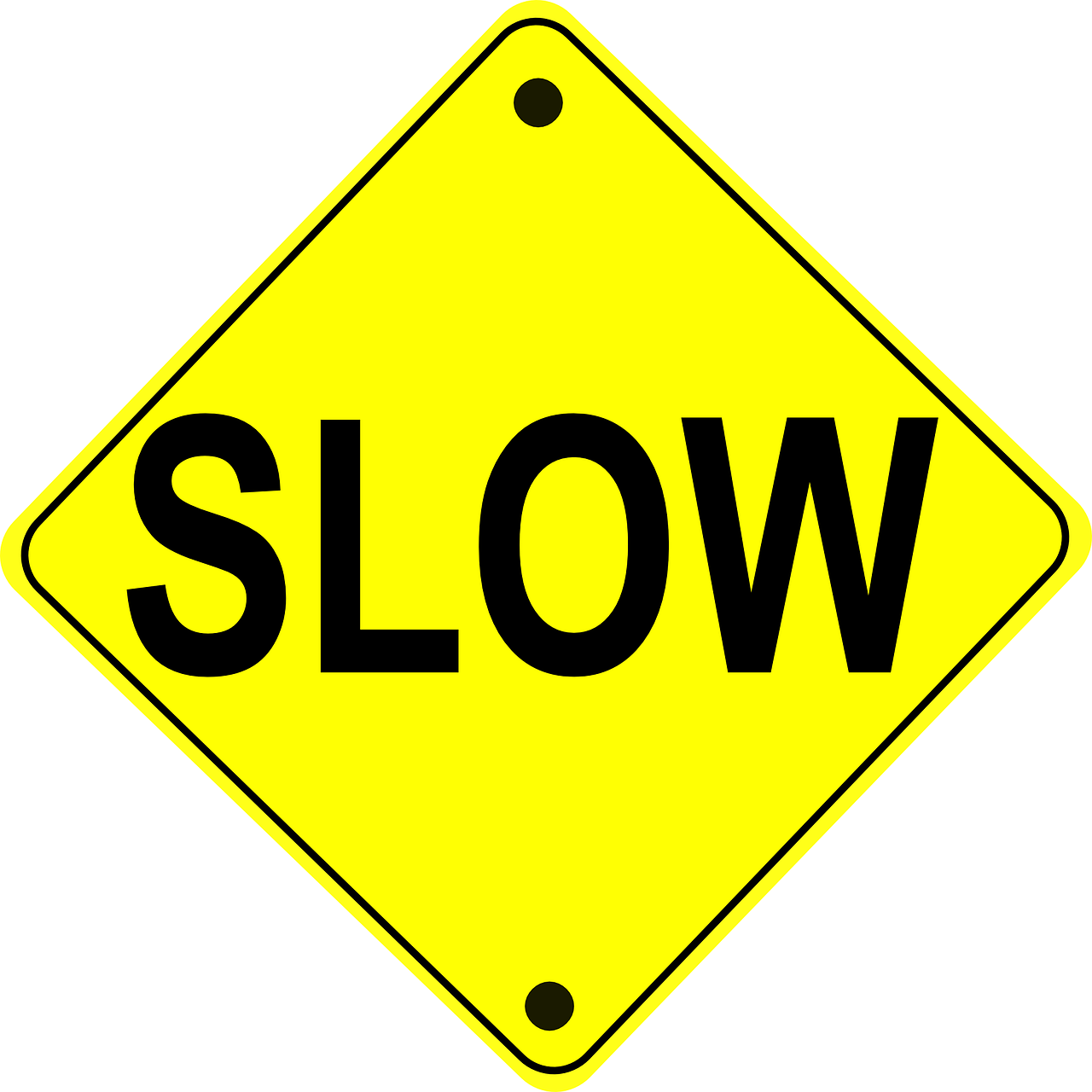
When you scarf down your food too quickly it's easy to swallow extra air along with your food without realizing it. This can cause your stomach to feel bloated, which can make it more difficult to breathe.
Then, if you are struggling to breathe as you eat, you are even more likely to swallow air. This can create a vicious feedback loop where eating makes you feel bloated, being bloated makes you feel short of breath, and being short of breath causes you to become even more bloated.
The solution to this is to eat more slowly, which reduces the amount of air you swallow as you eat and helps prevent you from getting too full. Pacing yourself also gives you the chance to practice breathing exercises while you eat and pay closer attention to how your body and stomach feel.
Another benefit to eating more slowly is that it allows you to chew your food up more before you swallow. This speeds up digestion by giving the food more time to break down in your mouth, reducing the risk of bloating.
Get More Exercise

As we mentioned earlier, exercise helps kick-start your digestive system, which helps prevent uncomfortable gas from building up in your stomach. As a result, physical activity can be a powerful tool for reducing bloating and keeping your digestive tract running efficiently.
Exercise increases blood flow to your stomach and intestines, which helps stimulate the muscles that contract your intestines and move food through. This helps your stomach empty faster, which moves gas-creating foods into your small intestine, where they are less likely to cause discomfort.
Exercise also strengthens your abdominal muscles, which helps move gas more quickly through your intestines. This prevents gas from building up in your gut and reduces bloating and discomfort.
As you can see, exercise can be both a treatment for bloating and used as a preventative measure against bloat. If you experience COPD bloating often, then increasing the amount of exercise you get could make a significant difference in how gassy you feel.
Research shows that even a small amount of moderate exercise every week can substantially improve bloating symptoms. Just thirty minutes of physical activity three times a week was be able to significantly reduce bloating in people with irritable bowel syndrome, a common stomach disorder that makes sufferers especially prone to bloating.
If you live a sedentary lifestyle or often have long periods of inactivity, talk to your doctor about putting together a new exercise plan to help you increase your physical activity. Then, it's up to you to build the exercise habits that will help you be healthier and less bloated.
Even if you have limited mobility or exercise seems like a daunting task, there are many different kinds of aerobic and strength training exercises that are tailored for people with breathing disorders and chronic diseases. You can start by taking walks, exercising at home, or taking part in a pulmonary rehabilitation class.
Get Moving After Meals

Since we know that slow digestion contributes to bloating, and exercise speeds up digestion, then it follows that getting some exercise after you eat can help prevent bloating. This is supported by studies that show mild exercise after a meal can aid in digestion.
If you tend to feel bloated after you eat, then try to plan in some time for light exercise after you finish your meal. For example, you could take a short walk around the block or do some stretching exercises to get your digestive juices flowing.
However, you should save more serious physical activities for at least a couple hours after you eat. Heavy exercise reduces blood flow to your stomach and intestines, showing down your digestion, and could end up making you feel sick or nauseous after you eat.
Watch Your Posture
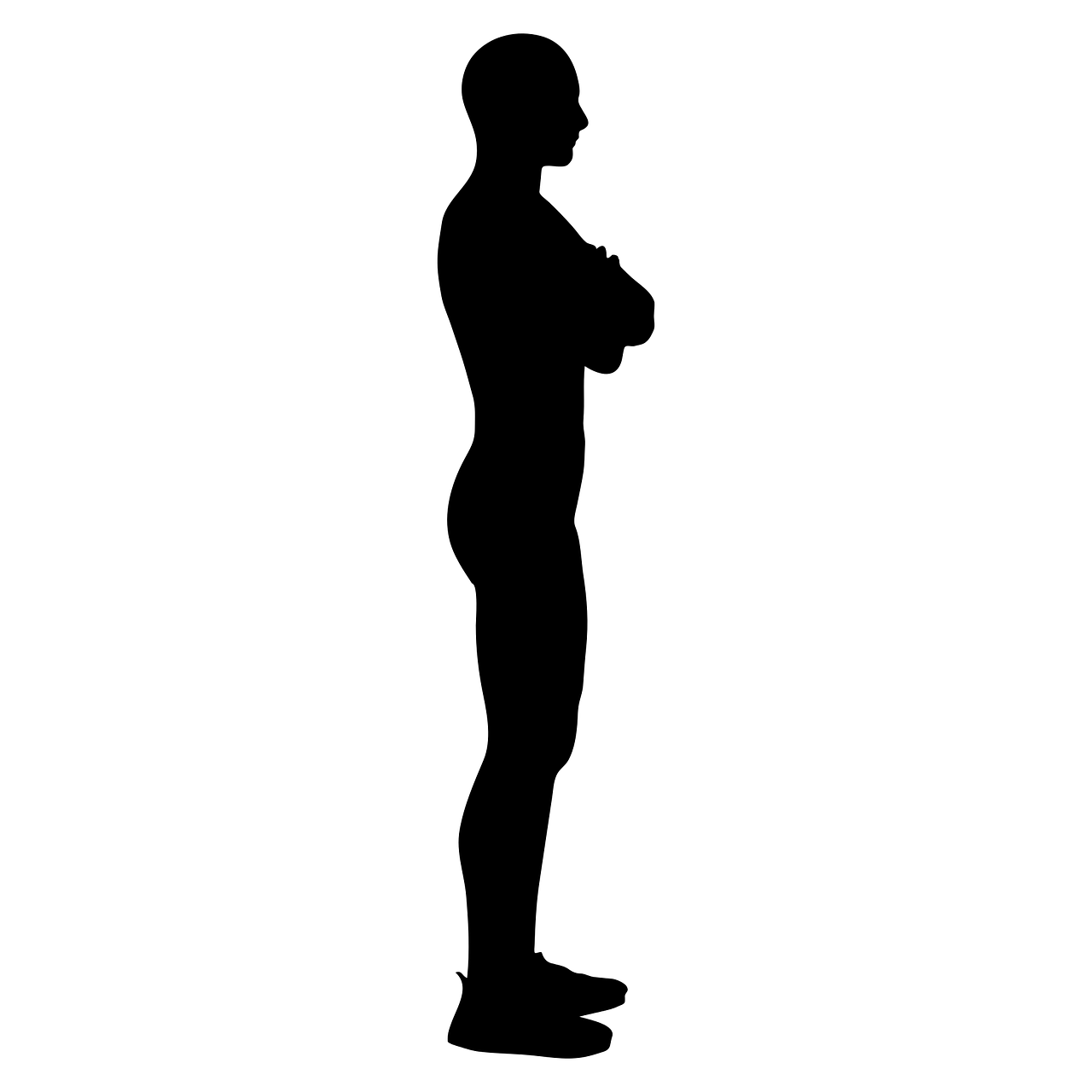
How you position your body during and after eating can have a significant affect on your digestion and how bloated you feel. The best thing to do is sit up straight while you eat and avoid lying down after meals.
Lying down and reclining your body makes it difficult to pass gas and encourages gas to build up in your stomach and intestines. Lying down also puts pressure on your lungs, which can make it even more difficult to breathe when you're bloated.
One study found that simply keeping your body upright can significantly reduce the amount of gas that gets trapped in your intestines. Because of this, keeping an upright posture, especially during and after meals, can reduce bloating and make it easier for you to breathe.
Avoid Foods That Cause Bloating

There are a variety of different foods that are known to cause bloating, although they don't affect everyone the same. Some people may be extremely sensitive to bloat-inducing foods while others have no problems at all.
Some foods cause bloating because they are difficult to digest or provide fuel for gas-producing bacteria in your intestines. Other types of foods, like fatty foods, cause bloating because they take extra time for your body to digest.
Let's take a closer look at some of the most common foods you should avoid that cause bloating.
Fatty Foods

Fatty foods, especially greasy and deep-fried foods, are a major cause of bloating. That's because foods that are high in fat take longer to digest and move through your system.
If you tend get bloated after meals, try to eliminate some of the most fatty foods from your diet. Reducing your intake of greasy foods and fried fast foods is especially important.
Instead, try to eat smaller portions of fat as part of a balanced meal along with fruits and veggies, lean protein, and complex carbohydrates. You might find that reducing the amount of fat you eat makes a big difference in how bloated and uncomfortable you feel.
Salty Foods

Salt causes your body to retain water, which can cause you to feel bloated. While this kind of bloating is different from bloating caused by gas, it can be just as uncomfortable and make it difficult to breathe.
According to the US Department of Health and Human Services guidelines, older adults should limit their salt intake to 1,500 mg or less every day. That translates to about ¾ teaspoon of pure salt.
Unfortunately, it's nearly impossible to stay under 1,500 mg of salt unless you go out of your way to avoid it. That means limiting processed foods, salty restaurant foods, and home-cooked meals that include a lot of salt.
Salt hides in all sorts of unexpected places, which is why the best way to limit how much salt you eat is to cook low-sodium meals yourself. Nearly all processed foods, including processed snacks, processed meats, processed cheese, canned foods, cereals, and boxed meals, contain unhealthy amounts of salt.
You should also check the nutrition labels on all the foods you buy and choose versions that are lower in sodium whenever possible. When you eat out at a restaurant you can check their menu online ahead of time to look for lower sodium options, or ask your server to recommend items that are low in salt.
Carbonated Beverages

Carbonated beverages are bubbly and fizzy because they are infused with carbon gas. This gas escapes from the liquid over time, which is why carbonated drinks get “flat” after they've been left open too long.
When you drink something that's carbonated like soda or sparkling water, the gas escapes from the liquid while it's in your stomach and intestines. This gas gets trapped in your abdomen, resulting in uncomfortable bloating and gassy symptoms.
If you tend to struggle with bloating, you should try to avoid soda and all other types of carbonated drinks. To make the adjustment easier, you can replace them with other flavored beverages, such as tea, coffee, or water infused with fruit.
Sugar Substitutes

Foods labeled “sugar-free” usually use sugar substitutes, known as sugar alcohols, as a replacement for normal sugar. Sugar alcohols work because they taste sweet but aren't processed by your body the same as other sugars; this makes sugar alcohols low in calories and usually reduces the effect they have on blood sugar.
However, the downside of sugar alcohols is that they aren't very digestible, which causes many people to experience stomach distress and bloating when they eat them. In fact, health experts say you shouldn't eat more than a couple servings per day of artificially-sweetened foods.
You can recognize the most common sugar alcohols on nutrition labels with the names xylitol, sorbitol, and erythritol. They are most often found in sugar-free foods like candies and desserts and also in sugar-free gum.
Here is a list of all the sugar alcohols you may find in foods:
- Xylitol
- Sorbitol
- Erythritol
- Maltitol
- Isomalt
- Manitol
- Lactitol
- Hydrogenated starch hydrolysates
Beans and Cruciferous Vegetables
Beans, legumes, and vegetables from the cruciferous family are all known to cause gas and bloating. This happens because they contain a lot of fiber along with certain types of carbohydrates that many people's bodies have a difficult time digesting.
If you tend to get bloated after eating
If you are like most people with COPD, then you probably use an inhaler every day. Inhaled medications like bronchodilators and steroids are some of the most important and effective medications for COPD—that is, as long as you use them correctly.
Unfortunately, studies show that many, if not most, people do not actually use their inhaler correctly. This is a huge problem for all patients who use inhalers, but especially for people with COPD.
Inhaler medications for COPD not only help you feel better, but they help stave off infections, flare-ups, and dangerous exacerbations that can make your disease worse. If you are not using your inhaler correctly, then you don't get the full dose of the medication you need to keep your symptoms under control.
{{cta('b59df0c1-c4de-47a8-8e1c-0d33d4b414aa','justifycenter')}}
In this article, we're going to look at why so many people use their inhaler incorrectly and what can be done to solve the problem. We'll show you what proper inhaler technique looks like and how to avoid some of the common mistakes patients make when using their inhalers.
Why is Poor Inhaler Technique So Common?

Inhalers are relatively straightforward and easy to use; after all, it's not uncommon to see very young children use an inhaler for asthma. So you might be wondering, how do you use an inhaler wrong, and is it really that easy to do?
Unfortunately, yes, it is very easy to use an inhaler incorrectly just by rushing, holding it incorrectly, or skipping important steps. Inhalers are not complicated, but they do require a specific technique in order to work effectively.
Too many people either don't know the correct steps or believe that getting a little lazy about their technique isn't a big deal. Even worse, studies show that 85% of doctors do not know how to use an inhaler properly, and are thus unable to teach their patients the proper technique.
This can be very dangerous because, when you use an inhaler incorrectly, the medicine won't be as effective as it should be. Improper inhaler technique can significantly reduce how much medicine you inhale and and cause the treatment to fail.
Studies show that COPD patients who use their inhalers incorrectly have worse symptoms, more hospitalizations, and quicker worsening of their disease. It can also cause you to need to take other medications like antibiotics and oral steroids more frequently because your inhaled medication isn't working as well as it should.
It's important to remember that your inhaler contains a precise amount of medication specially selected by your doctor to be personal to you. It's important that you use you inhaler correctly and as directed to make sure that you get the full dose that you're supposed to take.
Are You Using Your Inhaler Wrong?
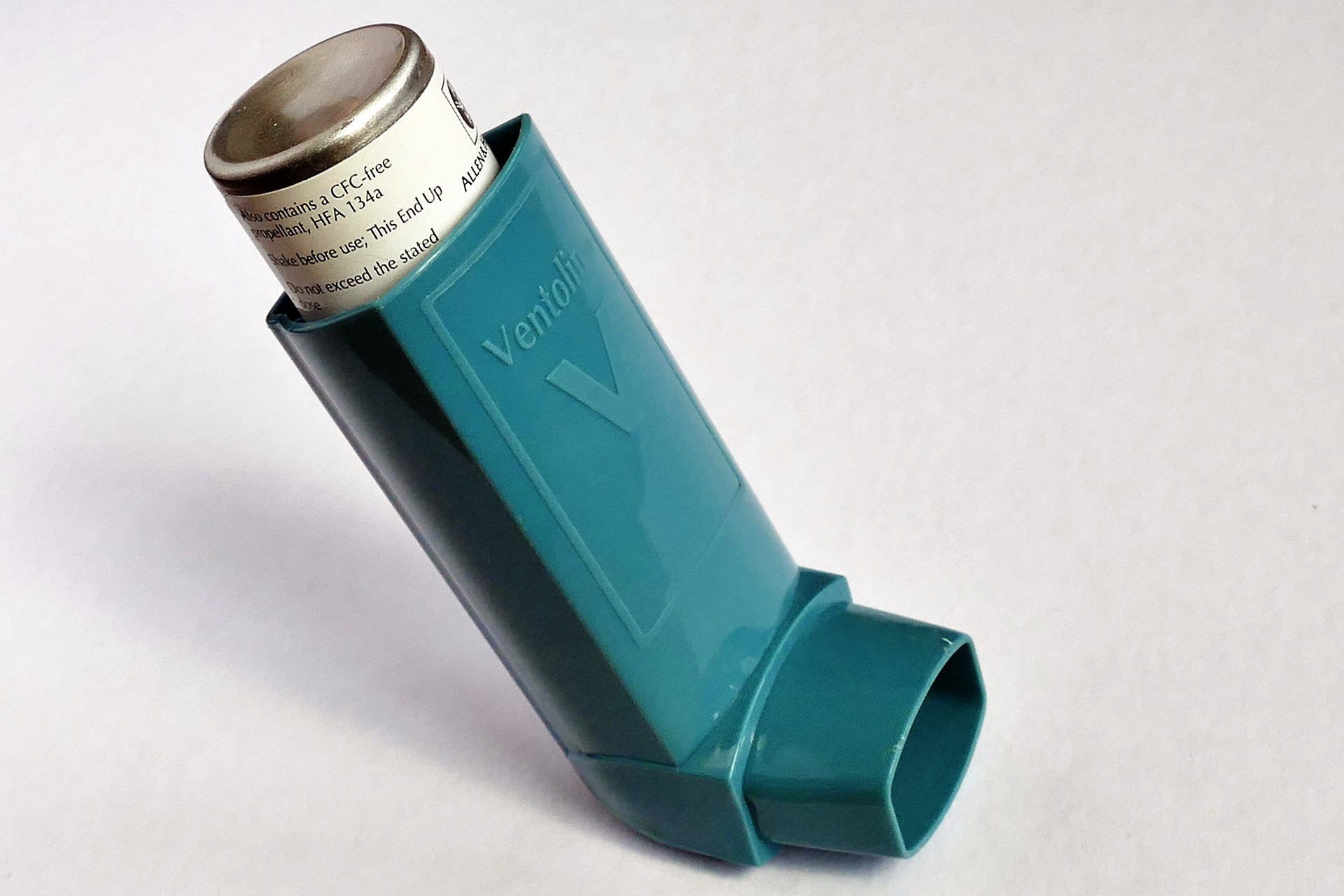
There are several different types of common inhalers, and each work slightly differently and require different techniques. That's why it's so important for both doctors and patients to be fully trained in the specific type of inhaler prescribed.
However, studies have identified some common mistakes that people frequently make when using their inhaler. Many of these mistakes have to do with preparing the inhaler and breathing technique during use.
If you suffer from COPD, knowing what proper inhaler technique looks like is absolutely vital for your health. That means following every step for your inhaler carefully and avoiding bad technique.
In these next sections, we're going to look at some of the most frequent mistakes that people make with their inhalers and how to correct them. We'll also show you some great resources you can use to learn proper technique for using your specific brand of inhaler.
However, nothing can substitute for a good demonstration from your doctor or another medical professional trained in proper inhaler use. After reviewing the information in this article, make sure you bring your inhaler to your next doctor's appointment so your doctor can evaluate your technique.
How to Avoid Common Inhaler Mistakes

Prepare Your Inhaler Properly
Most inhalers require you to follow some brief preparation steps before every dose you take. Both pulse-dose and dry powder inhaler require some kind of set up before use.
Load a Dose of Medication

Most pulse-dose inhalers have a lever mechanism that you have to flip up before taking your dose. Many dry powder inhalers have a twist mechanism that you have to turn to load a dose of medication.
Don't forget to do this every time you use your inhaler, otherwise you won't get any medication when you press the button. Some dry powder inhalers also require you to prime it by twisting the mechanism back and forth before loading the first dose. This is a one-time thing that you only have to do right before starting a brand new inhaler.
Shake Your Inhaler (for Pulse-Dose Inhalers)
Most pulse-dose inhalers also need a thorough shaking in order to work properly. This is a step that many patients forget or don't do thoroughly enough.
Make sure you shake your inhaler for the full length of time indicated in its instructions and avoid the temptation to rush. Some inhalers require a full thirty seconds to a minute of vigorous shaking before they are ready to use.
Attach your Spacer

If you need to use a spacer, don't forget to attach it to your inhaler's mouthpiece before you take your dose. Spacers are important because they help you time your inhalation correctly with the spray, and if you don't use it you may not get your full dose of medication.
Check for Grime and Debris

You never know when dust, dirt, or other particles may make it into your inhaler's mouthpiece—that is, not unless you look. That's why you're supposed to check your mouthpiece for grime and foreign particles before every single use.
This is also the reason that you should keep the protective outer cap on your inhaler at all times. If you remember to replace the cap immediately after every single use you'll be less likely to lose or misplace it, and your mouthpiece won't get as dirty over time.
Breathing in dust, dirt, or pollen that settles on your inhaler could irritate your lungs and make your COPD symptoms worse. You should also look out for sticky medication build-up, which can block the spray and make your inhaler less effective.
Most importantly, make sure you understand and follow the directions that come with your inhaler in their entirety without skipping any steps. Don't be afraid to ask your doctor to demonstrate how to prepare your inhaler or go over the instructions as many times as you need.
Hold Your Inhaler Upright
You should take care to hold your inhaler upright when you use it, especially during and after loading a new dose. This is especially important for dry powder inhalers; if the mouthpiece is turned sideways or upside-down any time during or after loading, you could lose some of the medication and get too small a dose.
Be careful to hold your inhaler straight up and down, not at an angle, when you take your dose. You should also make sure to position the inhaler correctly at your lips; leaning in too far can cause the spray of medication to land on your mouth or tongue, instead spraying straight down your throat.
Breathe Out Completely First
When you use your inhaler, you want the medication to make it all the way through your airways and deep into your lungs. This works best when you exhale first to clear your lungs of stale air before inhaling your medication.
Unfortunately, many patients skip this step either because they don't know or because they are in a hurry or forget. Other patients don't take the time to breathe out fully enough, leaving air in their lungs and airways when they take their dose.
However, it's important to make sure that you don't exhale into your inhaler when you breathe out, especially if you use a dry powder inhaler. Instead, turn your head to the side or tilt it up, away from your inhaler, before beginning to exhale.
Aim Your Inhaler Correctly
The primary purpose of an inhaler is to deliver your medication directly to your lungs and airways. This helps the medicine act quickly to reduce inflammation and respiratory symptoms at their source.
However, some people who use inhalers end up aiming the spray in the wrong place when they inhale. This causes the spray to mist your mouth or tongue, and less of the medication actually makes it down your throat.
That's why it's important to take your time and angle the mouthpiece correctly when you use your inhaler. If too much of it ends up in your mouth, you may not breathe in enough medication to receive the full dose you're supposed to take.
Always make sure you hold your inhaler upright and use your spacer if you have one. Do your best to aim the spray right at your throat so you can inhale as much of the spray as possible.
Use Proper Breathing Technique
 |
| Image courtesy of NIAID. |
Some patients get too little medicine from their inhaler because they don't use proper breathing technique when they take their doses. Some people inhale too quickly, too late, or don't breathe in forcefully enough to take in all the medicine.
When you use your inhaler, you should always take long, slow, deep breaths. If you have trouble with this because of your COPD, take the time to practice some breathing techniques like pursed-lips breathing to help you catch your breath before you take your dose.
To make sure you are inhaling at the correct time, start breathing in slowly just before you you press the button to release the dose. As the dose sprays, begin inhaling more deeply to pull the medicine into your lungs.
If you use a dry powder inhaler, you may have to inhale more forcefully to get the full dose of medication. If you have any trouble timing your inhalation correctly or breathing in deeply enough, talk to your doctor and demonstrate how you use your inhaler so he can help you hone your technique.

Don't Forget to Hold Your Breath

When you breathe in the medication from your inhaler, you should breathe slowly, deeply, and take in as much air as possible. Then, you are supposed to hold your breath to give the medication time to absorb.
This is a step that many patients tend to forget or cut short. You should hold your breath for ten full seconds, or as long as you can if you can't hold your breath for that long.
Holding your breath after using your inhaler is an important part of proper inhaler technique and is important for your medication to work effectively. If you are supposed to take a second dose, you should always wait thirty seconds to a minute (or whatever time is indicated in the instructions) after the first dose before using your inhaler again.
Rinse Out Your Mouth

Even when you use proper inhaler technique, a small amount of the medication inevitably ends up in your mouth instead of your airways. Certain medications, especially corticosteroids, can cause uncomfortable symptoms like mouth dryness and irritation when this happens.
This is important because a dry mouth is more than just uncomfortable; it can actually be bad for your health. When your mouth is dry too often, it creates opportunities for bacteria to grow, and can cause cavities, gingivitis, and even fungal infections in your mouth.
That's why many inhalers, especially steroid inhalers, include instructions to rinse out your mouth right after use. This washes any extra medicine off the surface of your mouth before it has a chance to absorb into the lining.
However, this only works if you wash your mouth out immediately after using your inhaler (and after holding your breath, of course). Even waiting 30 seconds to a minute too long may allow too much of the medication to absorb into your mouth.
{{cta('fa8abc2a-1e88-4fa3-82fd-1cb5b9ed43b2','justifycenter')}}
To help you with proper rinsing technique, use your inhaler in front of a sink and make sure you have a small cup of water at the ready. Then, after you use your inhaler, immediately take a large sip of water and swish it around your mouth.
After a few seconds, spit the water back out into the sink. As long as you rinsed your mouth out immediately, this should effectively get most of the medication out of your mouth and help you avoid dryness and irritation.
Never Use an Empty Inhaler
Some patients continue using their inhaler after it's run out of medication because they don't realize that it is empty. This can be very dangerous because you don't get the medication you need to manage your COPD.
Many types of inhalers have dose counters to help you tell when you've run out of doses. Make sure you always pay attention to this counter and start a new inhaler once it reaches zero, even if your inhaler still sprays.
Unfortunately, many metered dose inhalers do not have dose counters to tell you when they are empty. However, you can tell whether or not it is empty by listening for the sound of the medication inside when you shake it. You can also check by spraying the inhaler into the air; if you see a mist, then you know it isn't quite empty yet.
Practice in Front of Your Doctor
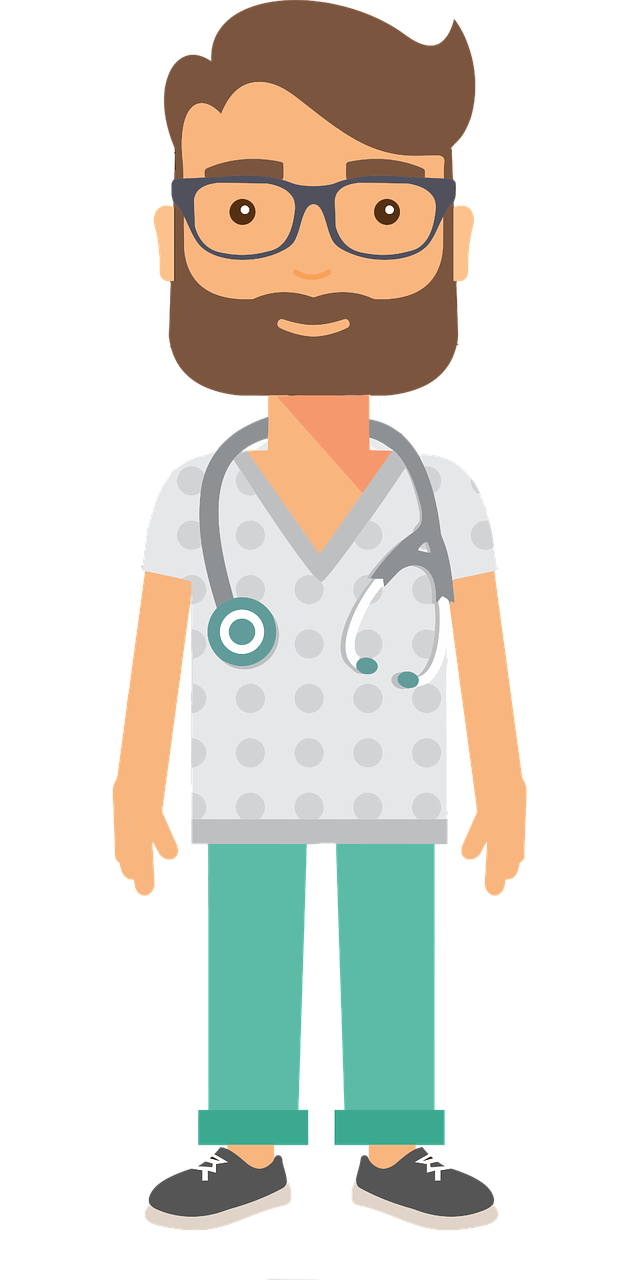
Medical experts recommend that doctors have their patients demonstrate using their inhaler in front of them at every doctor's visit. This allows doctors to catch and correct any mistakes and refresh their patients' knowledge of proper inhaler technique.
However, in practice, may doctors and patients get too comfortable and see this part of the examination as unnecessary. Inhaler demonstrations may also get skipped or overlooked when the patient forgets to bring their inhaler to the appointment.
Unfortunately, there is another deeper problem with doctors teaching proper inhaler use: Studies show that the majority of doctors themselves don't know how to follow the steps correctly. That's why it's important to work with a doctor whom you trust and who is thoroughly trained in how to use all the medications he prescribes. It may also be worthwhile to ask your doctor how confident he is about demonstrating proper inhaler technique and how recently he has refreshed his training.
To reduce the chances of error, you and your doctor could go over the detailed instructions that come with your inhaler together as you practice your technique. You can also talk to a licensed pharmacist at the pharmacy when you pick up your prescription; pharmacists are trained in how to use inhalers properly and should be able to show you how use yours right.
Know Your Medications
Managing all the medications you need to take every day is not always easy, especially if you have advanced COPD or suffer from another disease or condition. However, your medications are your lifeline, and it's vital to know each and every one of them and understand how they work.
You need to know your inhalers by more than just their color or brand; you should be able to name each medication and explain what it is for. If you need help, take some time to study the information packet that comes with your prescription or ask your doctor to explain.
You can also talk to your pharmacist if you have any questions about your medications or just need someone to explain them to you in more detail. Never be afraid to ask questions, even if you need to ask the same question more than once; it's easier to understand something when you hear it explained multiple ways.
Medicine and health is a complex topic, and it may take time some and patience to learn all that you need to about your disease and your medications. The more knowledge you have, the better you will be able to manage your disease and take an active role in your own health and treatment.
Here is an overview of some of the most common inhaled medications prescribed for COPD.
Short-acting Bronchodilators: Opens up your airways and makes it easier to breathe, often used in rescue inhalers for quick symptom relief.
- Albuterol
- Levalbuterol
- Ipratropium
- Proventil
Long-acting Bronchodilators: Often used in maintenance inhalers to manage daily,long-term symptoms.
- Aclidinium
- Almeterol
- Arformoterol
- Indacaterol
- Symbicort
- Spiriva
- Atrovent
- Brovana
- Arcapta Neohaler
- Tiotropium
Corticosteroids: Reduce inflammation and are often used to treat COPD exacerbations and daily symptoms.
- Pulmicort
- Fluticasone
- Budesonide
Combination bronchodilator inhalers: Contain a combination of two or more different bronchodilator medications.
- Combivent Respimat
Combination Bronchodilator and Steroid Inhalers: Contains a combined dose of at least one bronchodilator medication and one steroid medication.
- Advair
- Breo Ellipta
Take Your Medication in the Correct Order
![]()
Many patents, especially those with more severe symptoms, have to use more than one inhaler to manage their COPD. When this is the case, the order in which you use your inhalers can be very important and affect how well they work.
For example, many patients have two primary inhalers: a rescue inhaler (usually containing a short-acting bronchodilator) and a maintenance inhaler (often containing a different type of long-acting bronchodilator). Some patients also use steroid medication inhalers or combination inhalers with a mixture of bronchodilators and/or steroids.
Depending on your unique condition


 So we can find the best portable oxygen concentrator for your needs!
So we can find the best portable oxygen concentrator for your needs!














